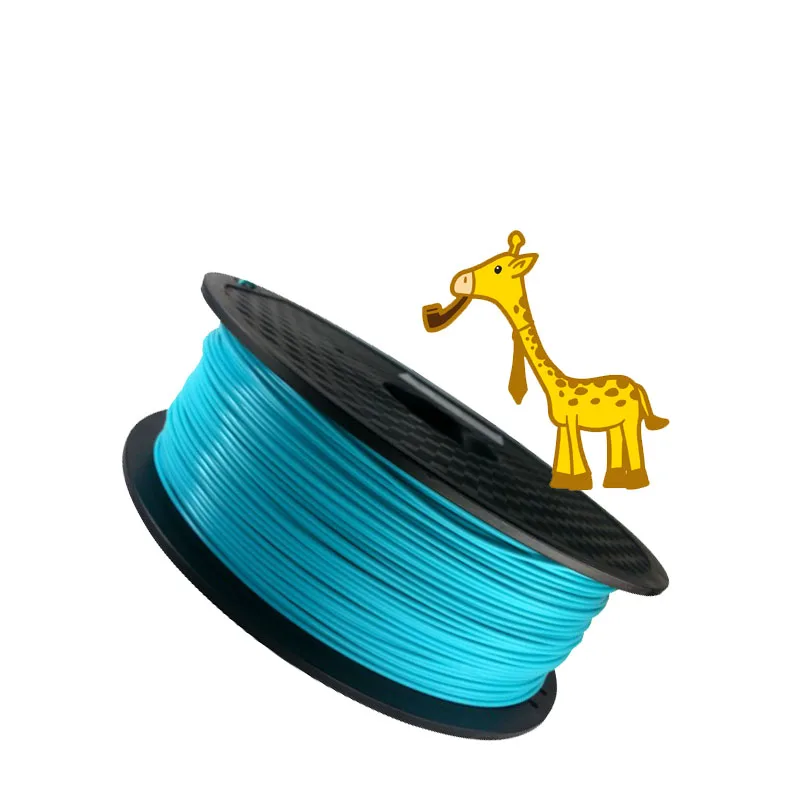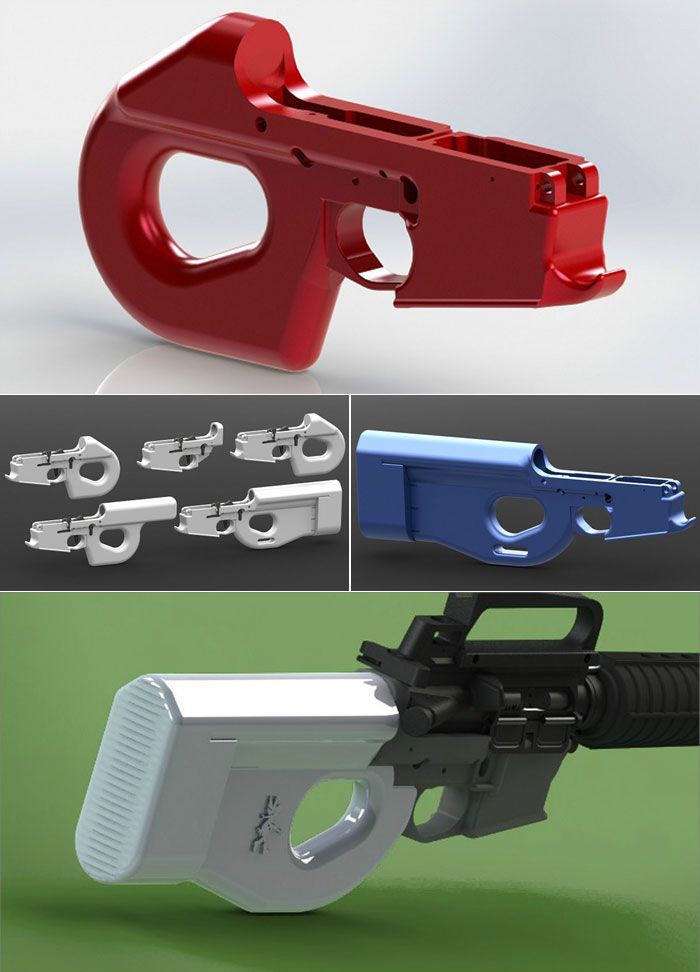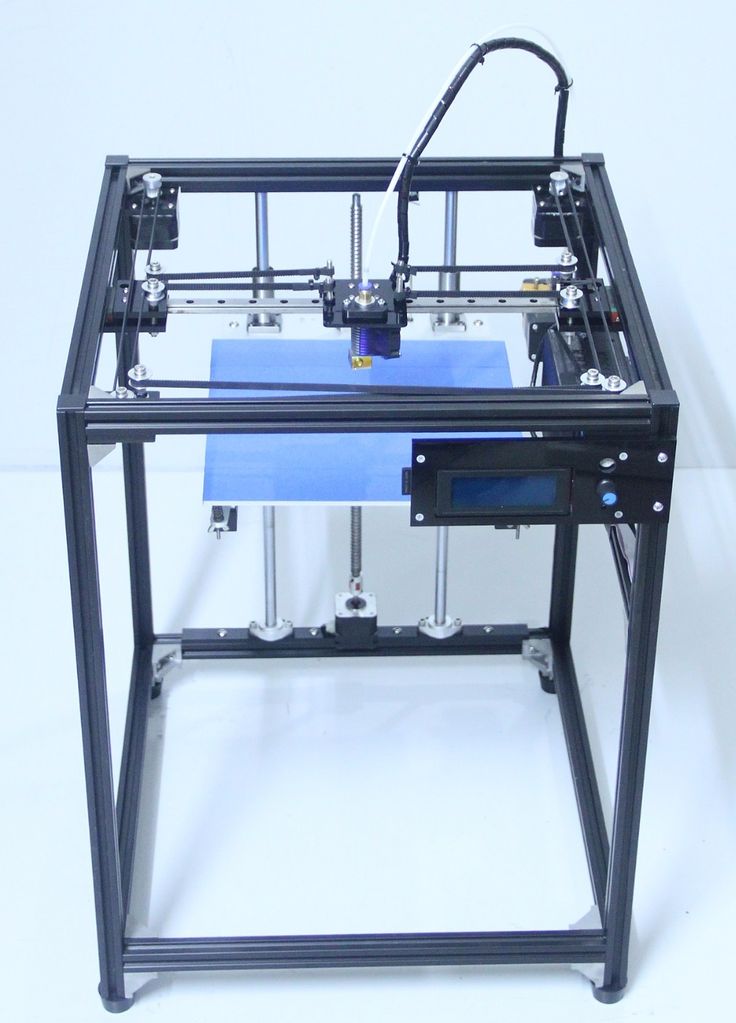Lost wax 3d printing filament
The Complete Guide to Lost Wax Casting and Wax 3D Printing
Categories 3D Printing Technologies, Guides
Last updated:
Most 3D printing technologies are direct; they directly create the finished object with no casting or further steps needed. These include Fused Deposition Modeling, Stereolithography, and many more. However, one lesser-known technique which 3D printing is also useful in is Lost Wax Casting, an indirect 3D printing process.
Also known as investment casting or precision casting, Lost Wax Casting involves creating a duplicate, or clone, of an original mold; usually from a metal such as gold or silver. The process has a rich history; it is believed to have been used since between 4500BC and 3500BC, with objects found in southern Israel created using Lost Wax Casting dated back to 3700BC. That’s over 5700 years ago!
We also have a free 3D printing ebook featuring guides to all the main 3D printing technologies. Click here for more information.
Lost Wax Casting Process Steps
Part 1: 3D Design of Lost Wax Casting Part
When using 3D printing in Lost Wax Casting it is important to remember that you will struggle if you don’t have prior 3D design skills, unless you create something that is freely available online. This is because you will need to design the 3D printer model which you intend to create to 3D print the original mold. You can do this on any of the free or paid 3D software options out there – we’ve also written our own free 3D software ranking and professional 3D software ranking.
Once you’ve chosen your 3D software tool, it’s time to design. Simply create your chosen piece, whether it be a piece of 3D printed jewelry like a ring or pendant, or even a crazy 3D printed heart. Once you’ve designed it, export it as an STL file or similar compatible file type and prepare for printing with your 3D slicer.
For more information on Lost Wax Casting, there’s an example of a Lost Wax Casting YouTube video featuring a sprue mold created with Formlabs’ Form 2 SLA 3D printer.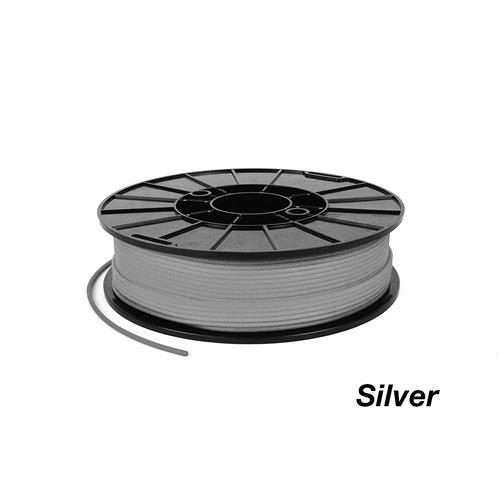
Part 2: Wax 3D Printing the Mold
Once you’ve sliced the 3D model of your piece to use with Lost Wax Casting, you’re ready to print! To check for sizing and fit, it is recommended to try a test run on lower quality settings, and then once you’ve got a perfect fit to 3D print your final model on higher settings. Once you’ve got a model you’re happy with, you’re ready to create the inner, negative mold.
Printers such as 3D Systems’ Pro Jet range, resin 3D printers such as those by Formlabs, and FDM 3D printers like an Ultimaker can be used to 3D print the mold. There are a number of good wax filaments which are compatible, though the Pro Jet range is able to print supports in material that has a lower melting point, making the support removal process simpler. Stereolithography printers like the Form 3 naturally print in a wax-like resin, similar in consistency to the waxy texture required.
Part 3: The Second Mold
Once your original, 3D printed mold is ready, you need to create a sealed area, or sprue, where you can pour the material inside. After you’ve set this up, pour the molten material (either silicone, polyurethane, or other wax-like material) inside the sprue.
After you’ve set this up, pour the molten material (either silicone, polyurethane, or other wax-like material) inside the sprue.
Once this has dried, remove the model. This is an exact negative of your original, 3D printed mold, and will form the basis of what will create your metal 3D printed piece.
Part 4: Creating the final metal piece using Lost Wax Casting
Once your negative mold is ready and dried, it is important to preheat it so it’s ready for the sudden bombardment of molten metal and subsequent heat.
Once your chosen metal has been heated to a high enough temperature and melted, pour it into your negative mold. This make a few tries to get right, and if not done properly can leave you without good enough detailing on your model. It is important to get this just right, or you’ll notice the imperfections forever. When it’s poured, leave it to cool down.
Part 5: Lost Wax Casting Post-Processing
Though nice and shiny, the metal object you’ve cast won’t look as pretty as it could. You’ll first need to cut off the excess metal that you poured into the negative mold. This cut will be rough, and will require polishing, sanding, or a similar process. Which process depends on the metal and it’s strength; soft metals like pewter can be shaped and refined far easier than metal or platinum.
You’ll first need to cut off the excess metal that you poured into the negative mold. This cut will be rough, and will require polishing, sanding, or a similar process. Which process depends on the metal and it’s strength; soft metals like pewter can be shaped and refined far easier than metal or platinum.
Anything else beyond this is completely your choice. You may wish to accessorize your piece with extras that match your style and creativity. Beyond this, it’s all down to you!A set of rings created with Lost Wax Casting before post-processing.
Lost Wax Casting Materials
A variety of metals can be used in Lost Wax Casting rings, pendants, and more. However, since the uses are mainly jewelry, more precious and expensive metals are used most commonly. These include:
- Gold – Either 14K or 18K gold is commonly used in expensive, high-quality jewelry pieces.
- Silver – 925 silver (92.5% pure) is commonly used also as it is very malleable and has good thermal conductive properties.
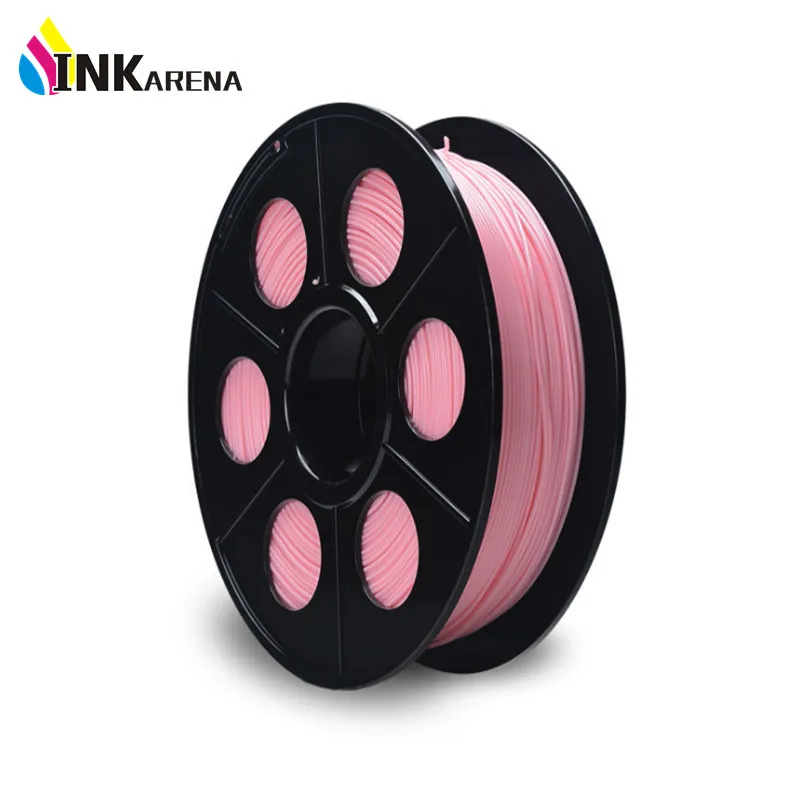
- Bronze with copper – A cheaper option, it is worth remembering that it will tarnish if the metal isn’t varnished.
- Brass – Another lower-priced option.
- Copper – A viable low-priced alternative.
If you’re looking for the best wax for Lost Wax Casting 3D printing for the original wax mold, there are a few options. For FDM 3D printing, you can use Print2Cast wax filament or MOLDLAY filaments designed by Kai Parthy. These aren’t like typical filaments, and extrude at different temperatures to PLA or ABS (usually at lower temperatures). For SLA or DLP or LCD 3D printers, there are a variety of wax-like resins available, as well as for Multi Jet printers.
Applications: Lost Wax Casting Jewelry and Dentistry
Unsurprisingly, given that Lost Wax Casting excels at creating very precise geometric patterns of metals, the process is used extensively in jewelry. Pro Jet 3D printers are accurate up to 0.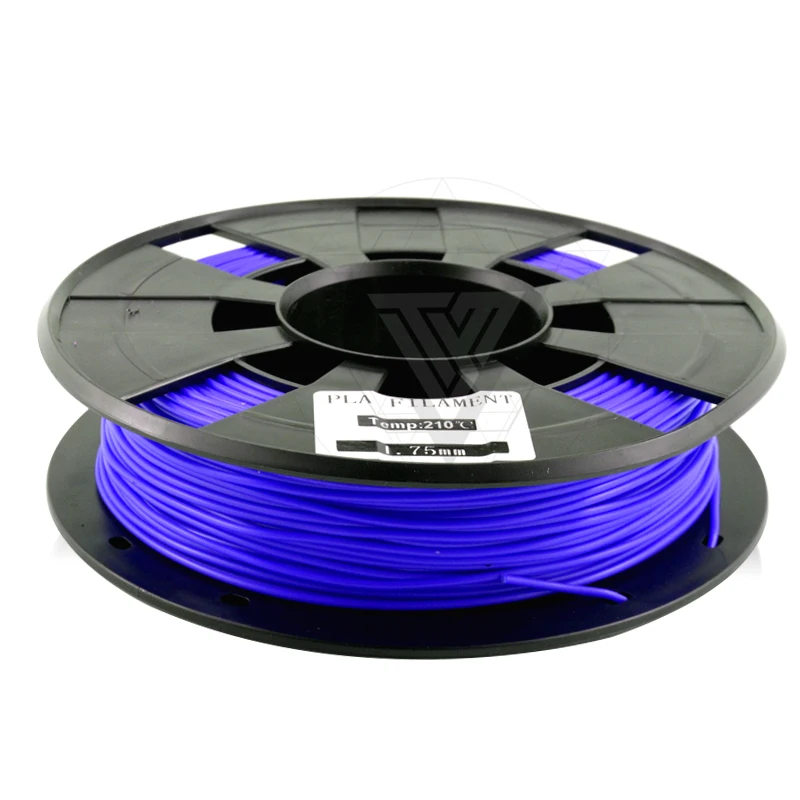 025mm in creating the original wax model, and this precision can then be passed on to the metal object. The jewelry can be created to perfectly set jewels like diamonds, emeralds, and rubies, making it a versatile and very attractive option for jewelers. Industrial 3D printer companies like EnvisionTEC, Formlabs, and 3D Systems make some of the best 3D printers for this purpose.
025mm in creating the original wax model, and this precision can then be passed on to the metal object. The jewelry can be created to perfectly set jewels like diamonds, emeralds, and rubies, making it a versatile and very attractive option for jewelers. Industrial 3D printer companies like EnvisionTEC, Formlabs, and 3D Systems make some of the best 3D printers for this purpose.
Lost Wax Casting Advantages and Disadvantages:
Advantages
- Compared to alternative 3D printing technologies to create geometrically complex metal objects, Lost Wax Casting has low barriers to entry and is cheap to produce. You do not necessarily require a $300,000 Direct Metal Laser Sintering or Electron Beam Melting 3D printer, just the Lost Wax Casting kit and materials.
- Though not a concrete, scientific fact; it is just more satisfying to craft your own pieces. Other 3D printing processes are very detached in that you press a button, and a few hours later out pops the finished product.
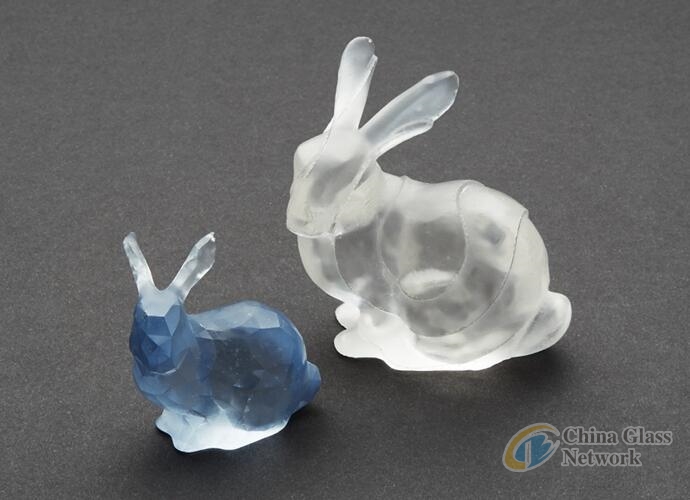 Lost Wax Casting is hands on, thus leaving you with the sense of satisfaction having completed the project.
Lost Wax Casting is hands on, thus leaving you with the sense of satisfaction having completed the project.
Disadvantages
- More hands on, and therefore slower and less scalable. Businesses looking to produce larger numbers of pieces quickly will prefer DMLS, Binder Jetting, or EBM, as they can create multiple pieces at higher speeds without the need for manual labor.
- Fairly steep learning curve. Pouring the molten metal correctly so every crevice is well-defined is a skill that takes time. Therefore, be prepared for failed projects, wasted materials, and much frustration
3dsourced
We've covered the 3D printing industry since 2017, tested over a dozen of the world's most popular 3D printers, and we're dedicated to being the most informative 3D printing site in the world to help democratize the technology.
3D Printing with Wax: The Process of Lost Wax Casting
3D Insider is ad supported and earns money from clicks, commissions from sales, and other ways.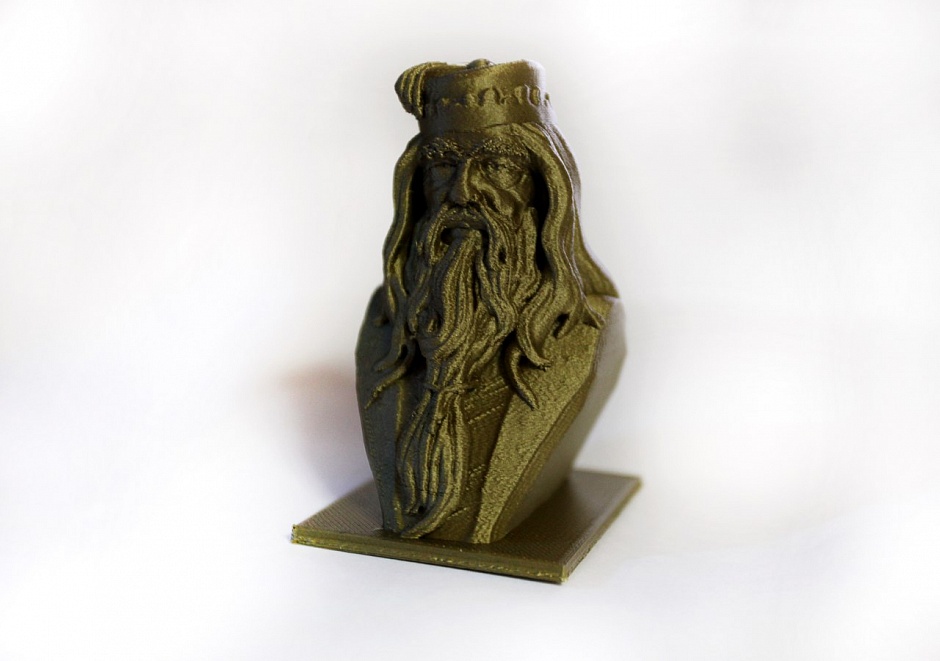
We know all about additive manufacturing by 3D printing. A filament is molten by a hot extruder and deposited on a print bed, and layers are built one by one until the design has been completed. It’s a direct, single-step procedure that produces the model in your desired material quickly.
However, there are also other, more indirect methods of additive manufacturing. One of these methods is called lost wax casting – a process that uses wax to create molds, which can then be used to create highly detailed designs out of molten metal. What is lost wax casting and how is wax used in this method? What are the advantages of this method over standard FDM printing?
What is lost wax casting?
Lost wax casting is a very old technique and has been used even before 3D printers came into the picture. Through this technique, a mold can be created from a prototype that was made using wax. For traditional jewelry makers, lost wax casting is a highly useful method for producing a high volume of custom pieces.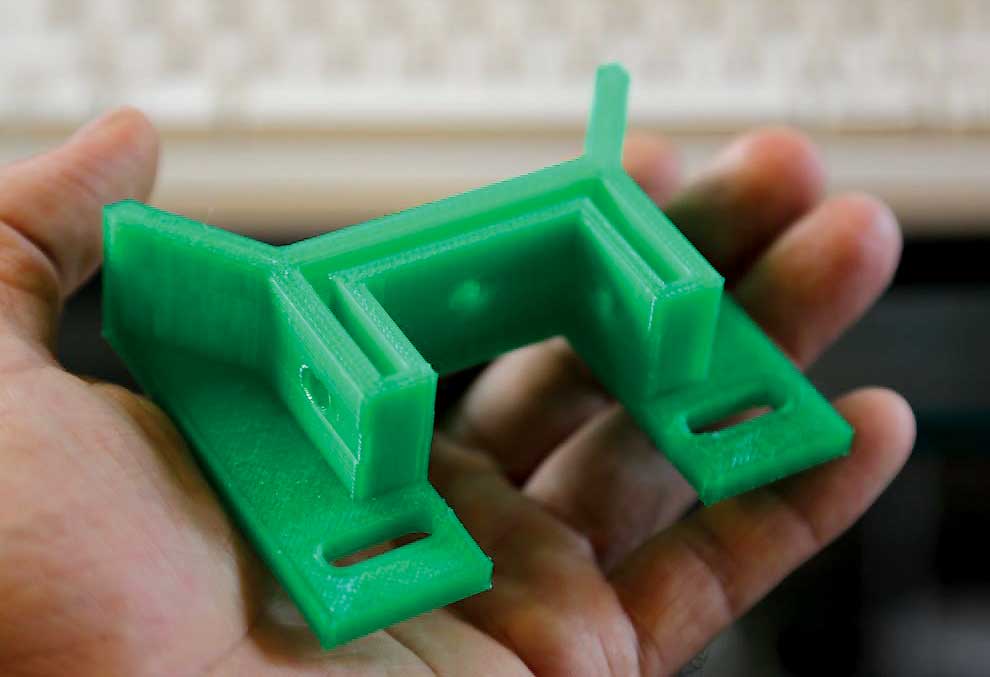 It is especially suitable for replicating very detailed designs quickly and accurately.
It is especially suitable for replicating very detailed designs quickly and accurately.
In lost wax casting, a mold is built about an initial prototype made of wax. Before 3D printing, artisanal craftsmen made these prototypes by hand by painstakingly carving details into a solid wax block. A negative mold is then built around this prototype using a more heat-stable material.
The wax prototype can then be easily melted away, leaving a negative mold with a cavity that accurately mimics the prototype. Since the mold itself is heat-stable, it can be used to create pieces out of sturdier materials such as molten metal.
In modern times, the method of lost wax casting isn’t really all that different. However, 3D printing technology has made it easier and faster to create a wax prototype. There are now several wax-like filaments that can be used with FDM printers and can be polished before being used to create negative molds.
What is the procedure for lost wax casting?
Lost wax casting is an interesting, albeit difficult, technique that can help you create multiple copies of a single design quickly.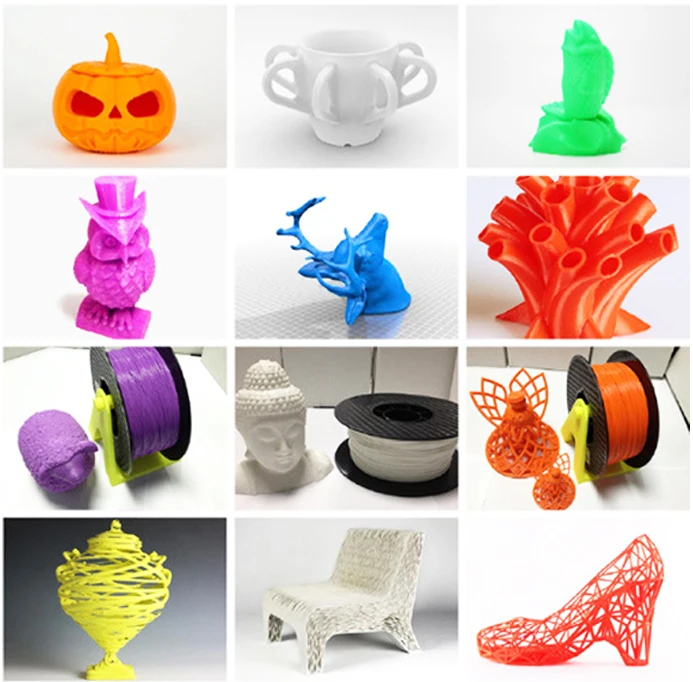 Making the mold could take a lot of work at first, but it’s smooth sailing once you have the mold in hand.
Making the mold could take a lot of work at first, but it’s smooth sailing once you have the mold in hand.
1. Choose a design
As with any standard 3D printing project, creating a wax prototype starts with a 3D design. You can make your own design or simply download a free model from Thingiverse or MyMiniFactory. Lost wax casting is best used for complex designs and jewelry, but you are free to choose any design that you’d like to recreate with metal.
2. Print the design using wax filament
With the 3D design on hand, you can proceed to print it using your FDM printer. The selection of wax filaments for 3D printing is quite limited, but the ones available in the market have pretty good quality. Just keep in mind that printing with a wax-like filament, as with any other flexible material, can get quite tricky. There are a couple rules to follow when printing with flexible filament, such as using a Direct Extruder and setting the printing speed to very low.
If you are unsure about the size or fit of the design you are printing, it is recommended to make a sample print on lower quality settings.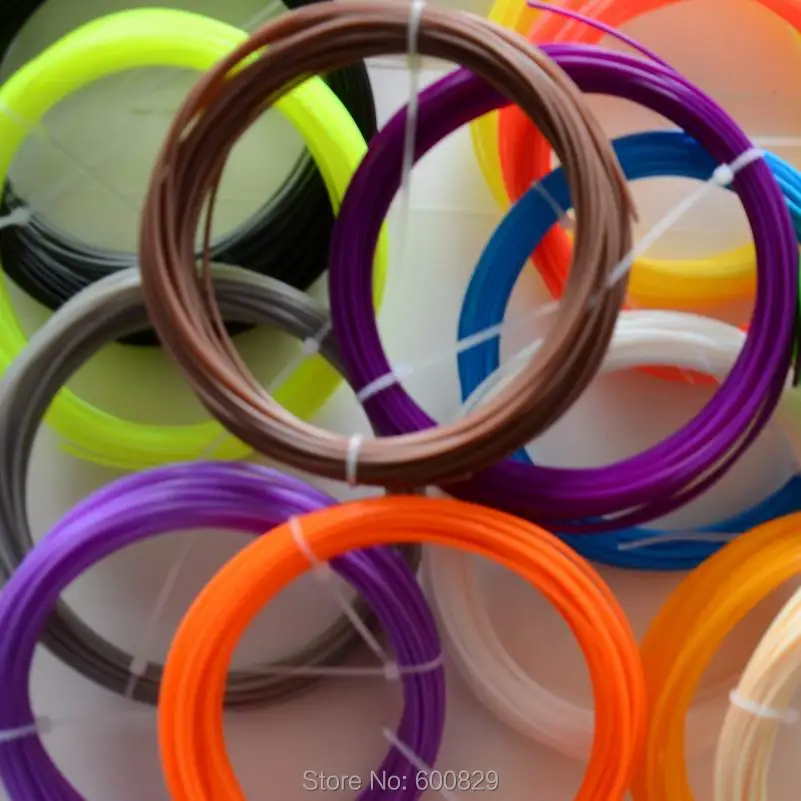 Once you’re happy with the size of your test print, go ahead and print it at the highest resolution possible. Remember – you’re only making one prototype, so make it look as good as you can.
Once you’re happy with the size of your test print, go ahead and print it at the highest resolution possible. Remember – you’re only making one prototype, so make it look as good as you can.
3. Create a negative mold
After you have created a mold that you’re satisfied with, you can proceed to create the negative mold. A negative mold is using silicone or polyurethane, materials that can be melted at high-temperature but are heat-stable once they have hardened. Silicone casting has been used for decades in engineering and in special effects, so you shouldn’t have a hard time looking for the appropriate material. You can also use a two-part epoxy that only hardens once the components are put together.
Before you can create the negative mold, you need to have a sealed box to pour the molding material into. In the field of casting, this is referred to as a “sprue.” It doesn’t have to be anything fancy in this case. A simple wooden box with sealed edges will do.
Allow the negative mold to fully cool down and solidify which can take 24 hours or more depending on your material of choice.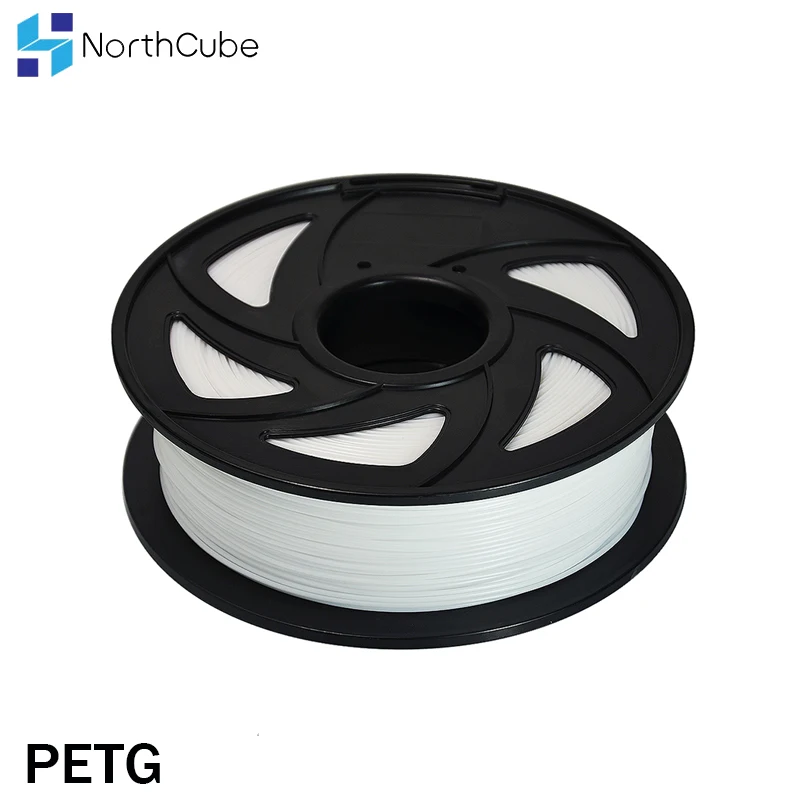 You can then the wax prototype to heat and allow it to melt and pour out of the negative mold.
You can then the wax prototype to heat and allow it to melt and pour out of the negative mold.
4. Use the mold to create metal products
With your negative mold ready, it’s time to create your finished metal product. Make sure the pre-heat the mold so that it doesn’t go through thermal shock when it comes into contact with the molten metal.
Several different metals can be used for lost wax casting, with the most common being brass and silver. You can even make highly valuable pieces using either 14K or 18K gold. Lost wax casting allows for the recreation of designs in metal that cannot be reproduced through more traditional methods. However, metal products made using lost wax casting typically come out with a rough finish, making it necessary to do a lot of post-processing.
How difficult the post-processing step will depend on how hard or soft the metal you used is. In any case, it is a good idea to keep tools for polishing and sanding handy when you do lost wax casting.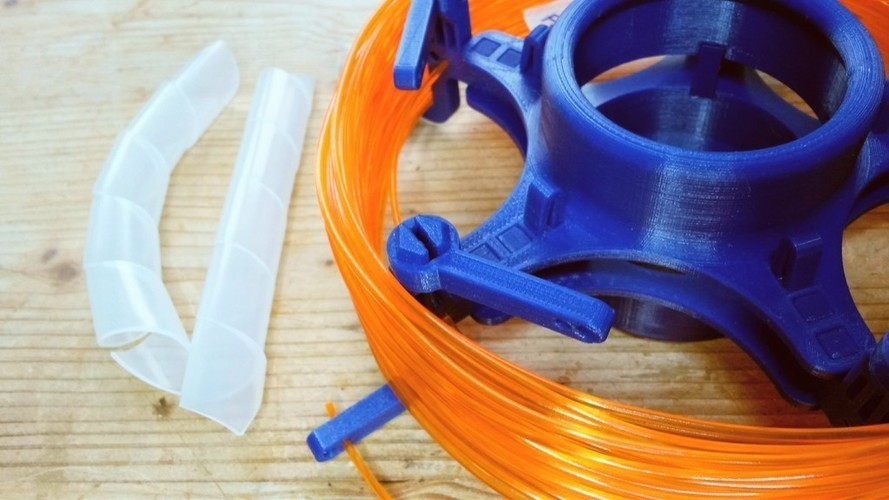
The best wax filaments for lost wax casting
There aren’t many wax filaments out in the market that are appropriate for the printing of molds for lost wax casting. Compared to other filaments, wax filaments are highly specialized, and we can imagine that not many people buy them. They are also quite expensive compared to your run-of-the-mill filament materials like ABS or PLA. To help you pick out the best filaments for your lost wax casting project, here are our top three picks:
1. Print2Cast Wax Filament
Print2Cast is a simple wax filament that promises a clean burnout, resulting in a negative mold that is extremely clean. It can be used with any 3D printer that can handle flexible filaments, like TPU. Print2Cast is the product of a company called Machinable Wax which specializes in different formulations of wax for various industrial applications.
The manufacturer’s page has a couple of tips on how to best use their wax filament for 3D printing.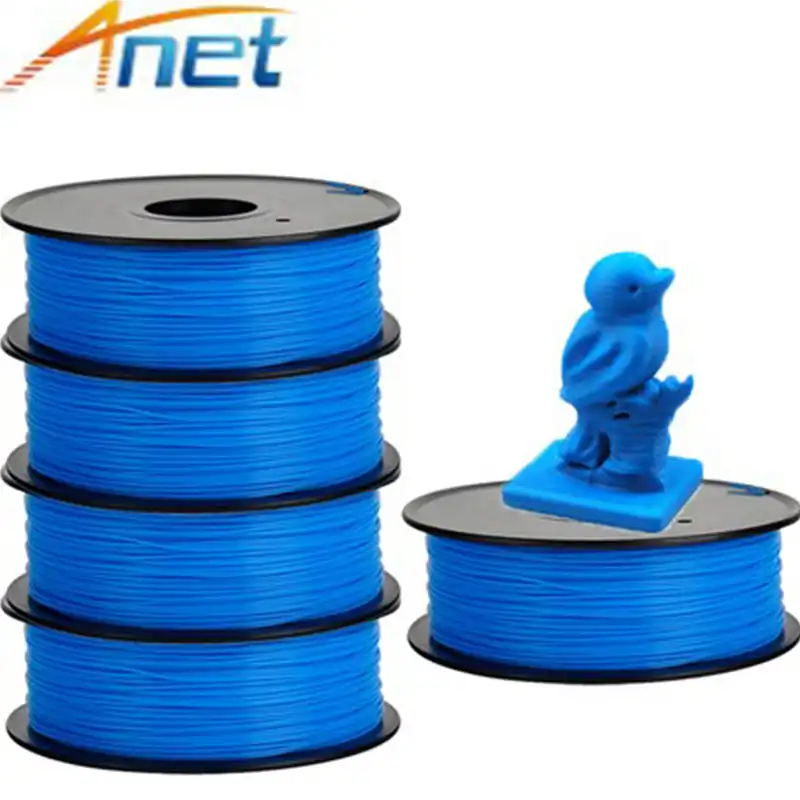 A glass heated bed treated with a layer of hairspray is recommended for bed adhesion, and a very slow, controlled cooling rate is highly recommended. Printing with the Print2Cast filament is certainly still tricky, but Machinable Wax has provided all the settings you need to ensure success.
A glass heated bed treated with a layer of hairspray is recommended for bed adhesion, and a very slow, controlled cooling rate is highly recommended. Printing with the Print2Cast filament is certainly still tricky, but Machinable Wax has provided all the settings you need to ensure success.
The best thing about prints made from Print2Cast is that they can be polished, carved, and machined, allowing you to improve the quality of the resulting negative mold. Should there be slight imperfections caused by the 3D printing process, it’s nice to know that you can still step in to fix these mistakes.
Machinable Wax suggests that you do a complete “burnout” of the wax model in the negative mold instead of just a “melt out.” A burn out ensures that there are no residues left in the negative mold, but it does take a lot of time to finish since you need a slow ramp-up of heat.
2. PolyMaker PolyCast Filament
The PolyCast filament from PolyMaker is another specialty filament that was specially made for lost wax casting.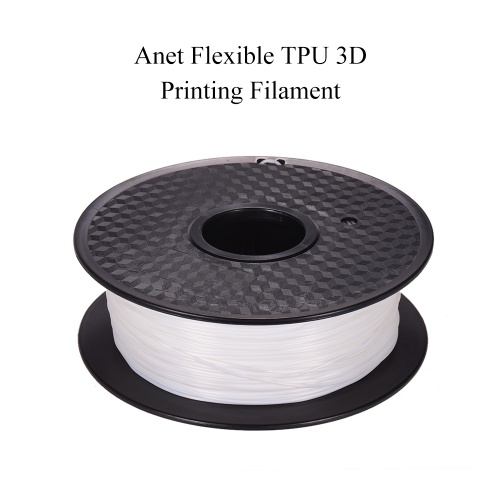 The filament burns out cleanly, leaving no residue on your negative mold as long as you do the burning out process correctly.
The filament burns out cleanly, leaving no residue on your negative mold as long as you do the burning out process correctly.
As with other flexible filaments, getting the right settings to print with the PolyCast filament with no issues can take a bit of trial and error. A glass heated bed is necessary, although customer accounts state that the filament sticks to the bed well enough without any adhesion aids. The finished 3D prints can be sanded and polished to get a smooth finish unless you can make do with the layer lines of an unprocessed print.
The product page does not conveniently provide the recommended printer settings for the PolyCast filament. We recommend getting in touch with the manufacturer directly for this matter.
3. PORO-Lay Mold-Lay 3D Printing Filament
Lastly, we have the Mold-Lay filament, which is a fairly popular choice in the field of lost wax casting. The manufacturer recommends using concrete to create a negative mold with this filament and placing it in an oven to burn out the wax.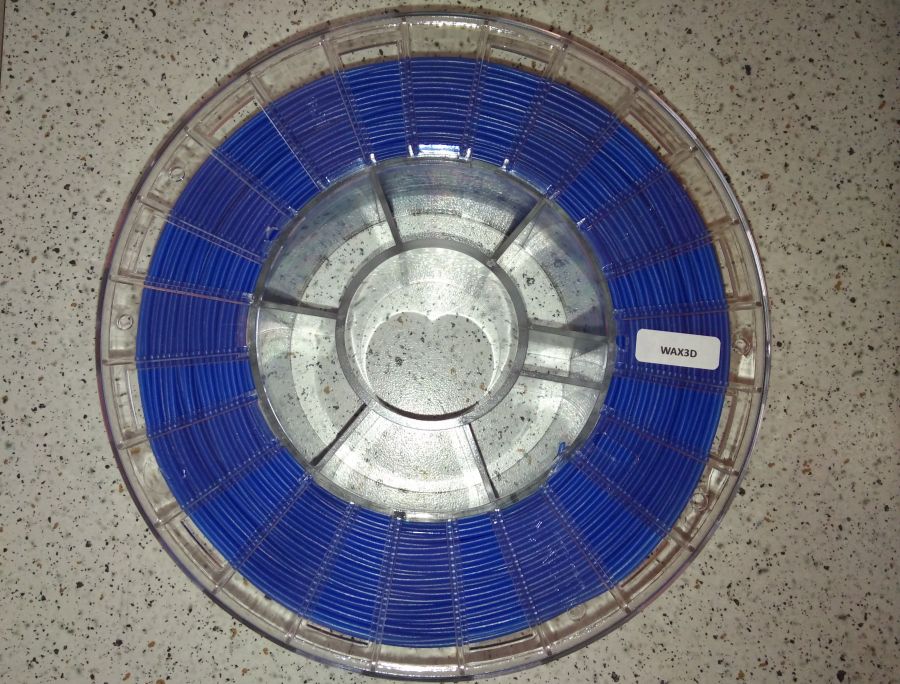 Should there any residue in the negative mold, it can be easily removed with some citric acid.
Should there any residue in the negative mold, it can be easily removed with some citric acid.
In contrast to the other filaments in this list, the Mold-Lay filament prints at quite low temperatures – within the range of 170 to 180 °C. This means that a heated print bed will not be necessary. However, a few customers have reported warping when printing with this filament, so some bed heating is still recommended.
The complexity of printing with the Mold-Lay filament is compounded by the fact that the 0.55 lb. bundle does not come with a spool. As you can imagine, maintaining tension in an unspooled filament is hard enough, but this is even more complicated, considering the flexible nature of this filament. This feeding problem is particularly frustrating because it could so easily have been avoided with a simple spool.
Advantages of lost wax casting
1. Does not require a lot of skill
If your goal is to make a metal object with a complex design, it’s much easier to do lost wax casting than to resort to more traditional ways of working with metal.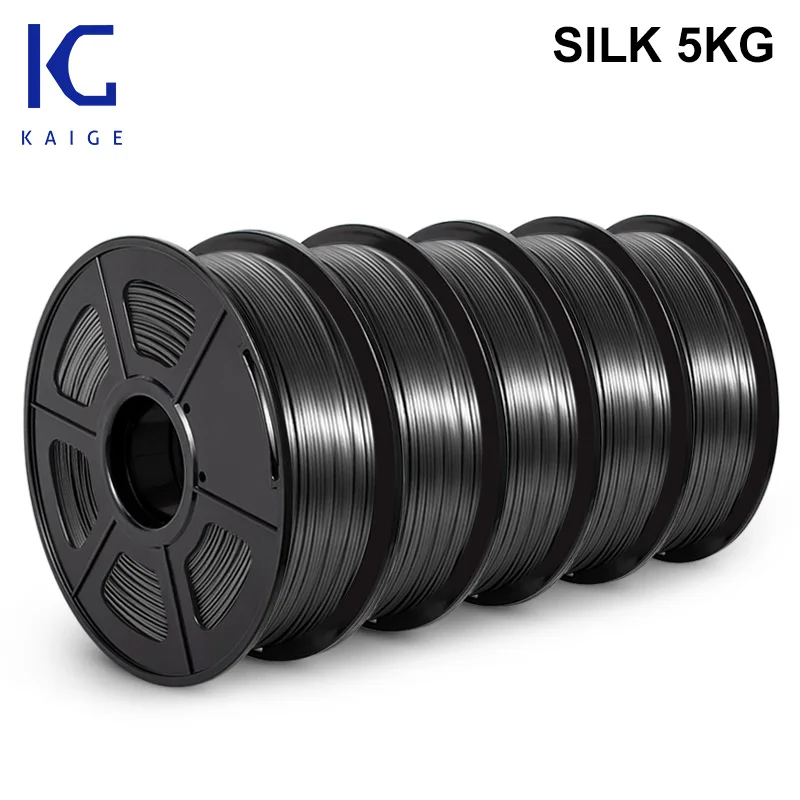 This is particularly true if you don’t have any experience or skill with crafting jewelry. Since we could be talking about precious metals like gold and silver, this can be a very expensive learning process for you.
This is particularly true if you don’t have any experience or skill with crafting jewelry. Since we could be talking about precious metals like gold and silver, this can be a very expensive learning process for you.
2. Cheap
Of course, not everything has to be done the old-fashioned way. You can turn to technology, such as metal laser sintering, to produce highly complex metal objects. The downside is these types of equipment are very expensive. If you already have a 3D printer on hand, why not leverage of its capabilities to make your metal models cheaper?
Limitations of lost wax casting
1. Difficult to learn
This might seem antithetical to what we mentioned above, but it still takes a considerable amount of skill to pull off lost wax casting successfully. There are lots of things that could go wrong in lost wax casting – your negative mold could end up with bubbles due to improper pouring of silicone into the sprue, the molten metal may not fill up all of the void spaces inside the mold, or you may end up damaging your metal product while you are removing it from the mold. You’ll probably need to learn from several mistakes before you get the process perfect.
You’ll probably need to learn from several mistakes before you get the process perfect.
2. Slower
Lost wax casting is a multi-step process which isn’t suitable for high-volume and short turnover jobs. Even the use of an FDM printer can significantly slow down the process. There are much faster alternatives out there, such as Binder Jetting and Direct Metal Laser Sintering, but they are also much more expensive.
Final thoughts
Lost wax casting is a very old technique, and marrying it with today’s 3D printing technology has really opened up a lot of possibilities. It’s a slow and tedious process, but it will make you work with your hands. For some people, this can be a very fulfilling experience, especially when you’re fully satisfied with how your final products turn out.
3D printing with wax filaments is tricky, but it’s just about challenging as printing with any flexible filament, like TPU. Just be wary of the filament deforming inside the extruder assembly.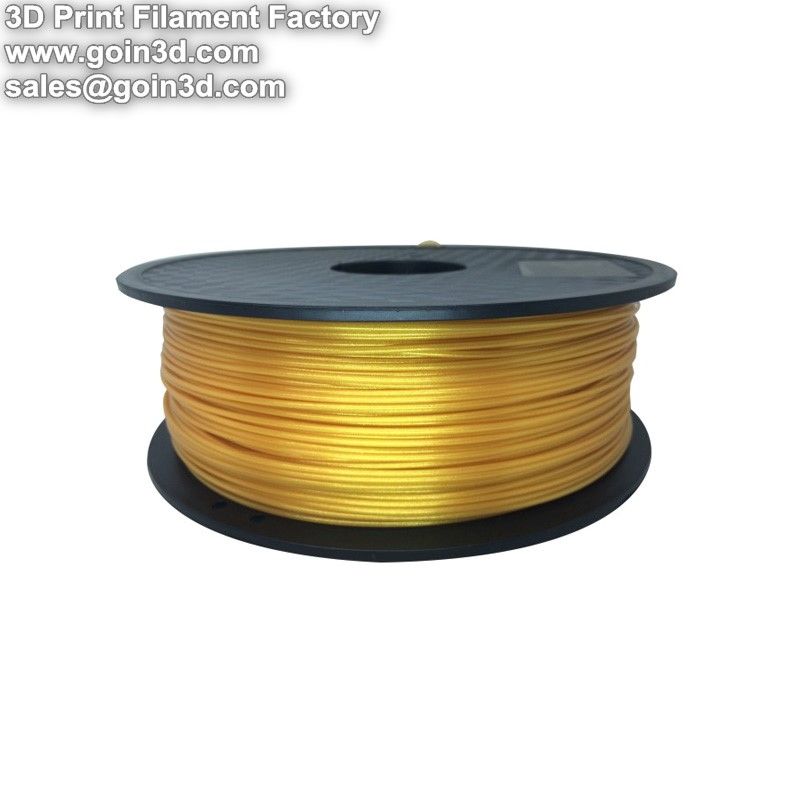 Flexible filament also takes a long time to solidify, so it’s best to keep your print speed settings very low.
Flexible filament also takes a long time to solidify, so it’s best to keep your print speed settings very low.
Warning; 3D printers should never be left unattended. They can pose a firesafety hazard.
FDM/FFF Consumables
FFF technology has many advantages, including the relative simplicity of the design of printers and the affordability of both devices and consumables. Moreover, the range of materials is perhaps the widest among all available technologies. As a rule, thermoplastics are used for printing, but there are exceptions - composite materials containing various additives, but based, again, on thermoplastics. In this section, we will try to talk about the most widely used materials in more detail, starting with the most popular types.
- 1 Polylactide (PLA, PLA)
- 2 Acrylonitrile butadiene styrene (ABS)
- 3 Polyvinyl alcohol (PVA)
- 4 Nylon
- 5 Polycarbonate (PC)
- 6 High density polyethylene (HDPE)
- 7 Polypropylene (PP, PP)
- 8 Polycaprolactone (PCL)
- 9 Polyphenylsulfone (PPSU)
- 10 Polymethyl methacrylate (Acrylic, plexiglass, acrylic, PMMA)
- 11 Polyethylene terephthalate (PET, PET)
- 12 High impact polystyrene (HIPS)
- 13 Wood Simulators (LAYWOO-D3, BambooFill)
- 14 Sandstone Simulators (Laybrick)
- 15 Metal Simulators (BronzeFill)
Polylactide (PLA, PLA)
Polylactide is one of the most widely used thermoplastics due to several factors.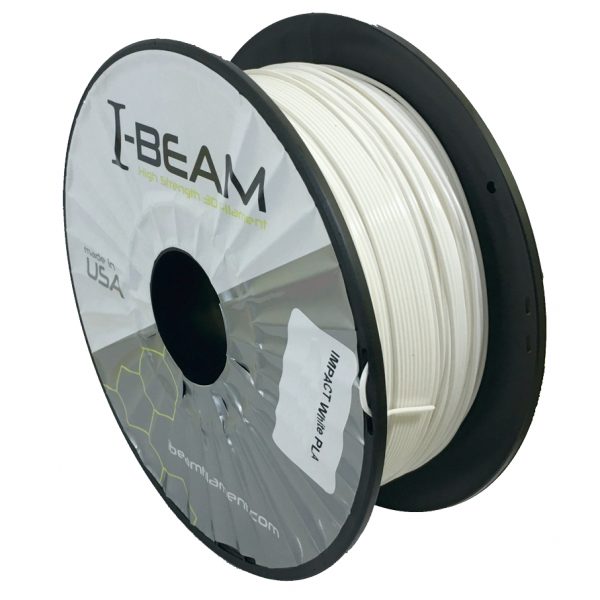 Let's start with the fact that PLA is known for its environmental friendliness. This material is a lactic acid polymer, which makes PLA a completely biodegradable material. The raw materials for the production of polylactide are corn and sugar cane. At the same time, the environmental friendliness of polylactide causes its fragility. Plastic easily absorbs water and is relatively soft. As a rule, PLA models are not intended for functional use, but serve as designer models, souvenirs and toys. Few practical industrial applications include the production of food packaging, drug containers and surgical sutures, as well as use in bearings that do not carry high mechanical loads (for example, in modeling), which is possible due to the material's excellent slip coefficient.
Let's start with the fact that PLA is known for its environmental friendliness. This material is a lactic acid polymer, which makes PLA a completely biodegradable material. The raw materials for the production of polylactide are corn and sugar cane. At the same time, the environmental friendliness of polylactide causes its fragility. Plastic easily absorbs water and is relatively soft. As a rule, PLA models are not intended for functional use, but serve as designer models, souvenirs and toys. Few practical industrial applications include the production of food packaging, drug containers and surgical sutures, as well as use in bearings that do not carry high mechanical loads (for example, in modeling), which is possible due to the material's excellent slip coefficient.
One of the most important factors for 3D printing applications is the low melting temperature of only 170-180°C, which contributes to relatively low power consumption and the use of inexpensive brass and aluminum nozzles. As a rule, extrusion is carried out at 160-170°C. At the same time, PLA solidifies quite slowly (glass transition temperature is about 50°C), which should be taken into account when choosing a 3D printer. The best option is a device with an open case, a heated work platform (to avoid deformation of large models) and, preferably, additional fans to cool the fresh layers of the model.
As a rule, extrusion is carried out at 160-170°C. At the same time, PLA solidifies quite slowly (glass transition temperature is about 50°C), which should be taken into account when choosing a 3D printer. The best option is a device with an open case, a heated work platform (to avoid deformation of large models) and, preferably, additional fans to cool the fresh layers of the model.
PLA has low shrinkage, i.e. loss of volume on cooling, which helps prevent warping. However, shrinkage has a cumulative effect as the dimensions of printed models increase. In the latter case, the build platform may need to be heated to evenly cool the printed objects.
The cost of PLA is relatively low, which adds to the popularity of this material.
Acrylonitrile Butadiene Styrene (ABS)
ABS is perhaps the most popular thermoplastic used in 3D printing, but not the most common. This contradiction is explained by certain technical difficulties that arise when printing ABS.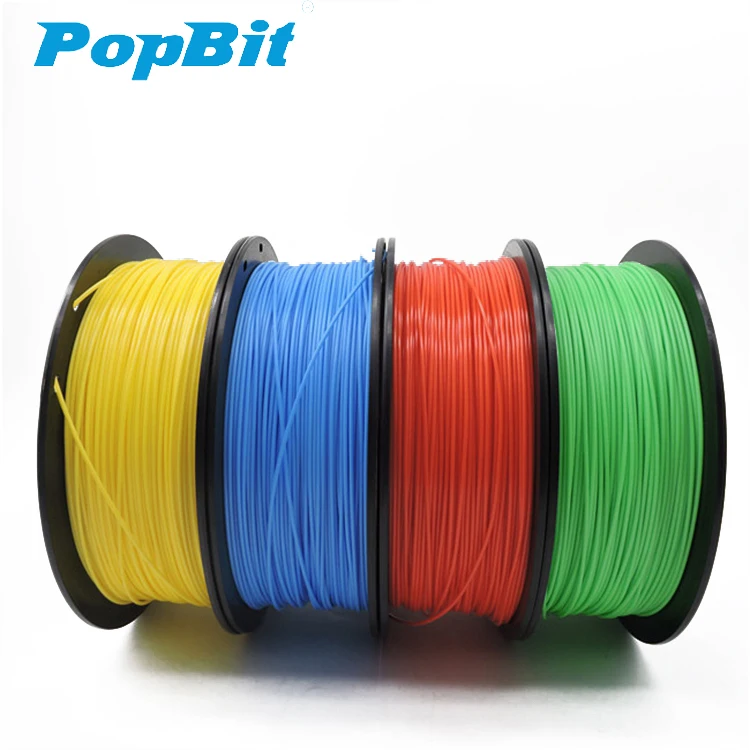 The desire of craftsmen to use ABS is determined by the excellent mechanical properties, durability and low cost of this material. In the industry, ABS plastic is already widely used: the production of car parts, cases of various devices, containers, souvenirs, various household accessories, etc.
The desire of craftsmen to use ABS is determined by the excellent mechanical properties, durability and low cost of this material. In the industry, ABS plastic is already widely used: the production of car parts, cases of various devices, containers, souvenirs, various household accessories, etc.
ABS plastic is resistant to moisture, acids and oil, has a fairly high temperature resistance - from 90°C to 110°C. Unfortunately, some types of material are destroyed by direct sunlight, which somewhat limits the application. At the same time, ABS plastic is easy to paint, which allows you to apply protective coatings on non-mechanical elements.
Despite a relatively high glass transition temperature of around 100°C, ABS has a relatively low melting point. Actually, due to the amorphous nature of the material, ABS does not have a melting point, as such, but 180 ° C is considered an acceptable temperature for extrusion, which is on the same level as the above-described PLA.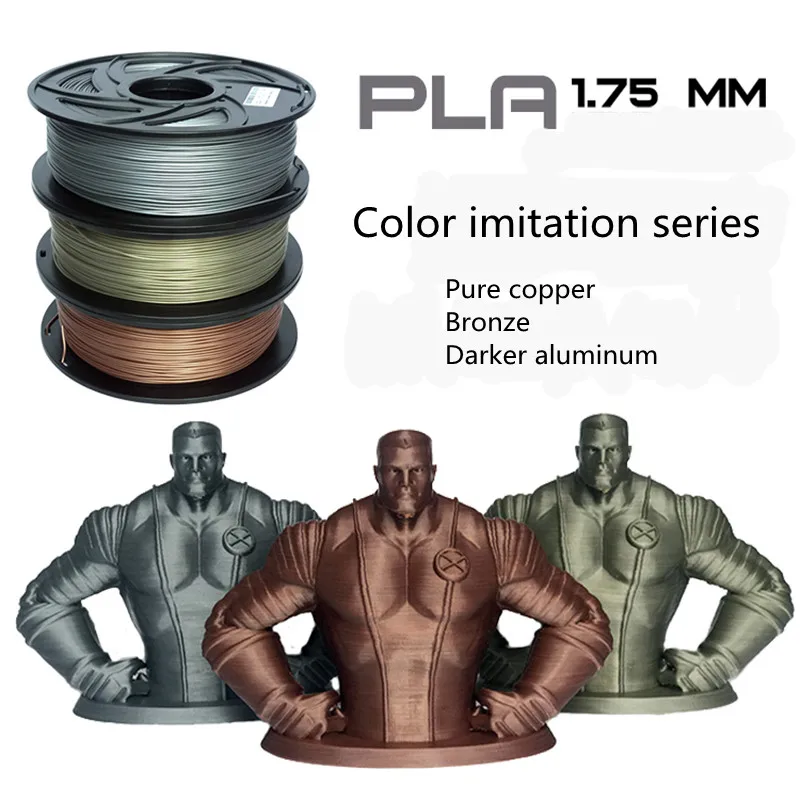 The lower temperature spread between extrusion and glass transition allows ABS to cure faster than PLA.
The lower temperature spread between extrusion and glass transition allows ABS to cure faster than PLA.
The main disadvantage of ABS plastic can be considered a high degree of shrinkage during cooling - the material can lose up to 0.8% of its volume. This effect can lead to significant deformations of the model, twisting of the first layers and cracking. To combat these unpleasant phenomena, two main solutions are used. First, heated work platforms are used to help reduce the temperature gradient between the lower and upper layers of the model. Secondly, ABS 3D printers often use closed housings and control of the background temperature of the working chamber. This makes it possible to maintain the temperature of the applied layers at a level just below the glass transition threshold, reducing the degree of shrinkage. Full cooling is carried out after receiving the finished model.
The relatively low stickiness of ABS may require additional bonding aids such as adhesive tape, polyimide film, or applying an acetone solution of the ABS to the platform just prior to printing.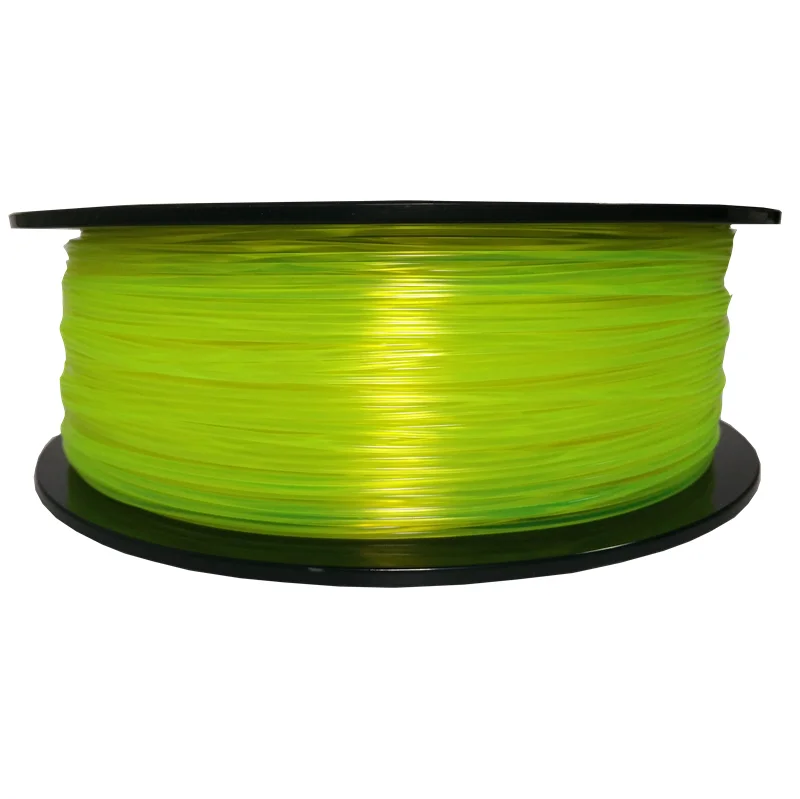 For more information on how to avoid warping, see How to Avoid Warping 3D Printed Models.
For more information on how to avoid warping, see How to Avoid Warping 3D Printed Models.
While ABS is not a health hazard at room temperature, heated plastic releases acrylonitrile fumes, a poisonous compound that can irritate mucous membranes and cause poisoning. Although the amount of Acrylonitrate produced in small scale printing is negligible, it is recommended that you print in a well ventilated area or use an exhaust hood. It is not recommended to use ABS plastic for the production of food containers and utensils (especially for storing hot food or alcoholic beverages) or toys for small children.
The good solubility of ABS in acetone is very useful as it allows large models to be produced piece by piece and glued together, greatly expanding the capabilities of inexpensive desktop printers.
Polyvinyl alcohol (PVA)
Polyvinyl alcohol is a material with unique properties and special applications.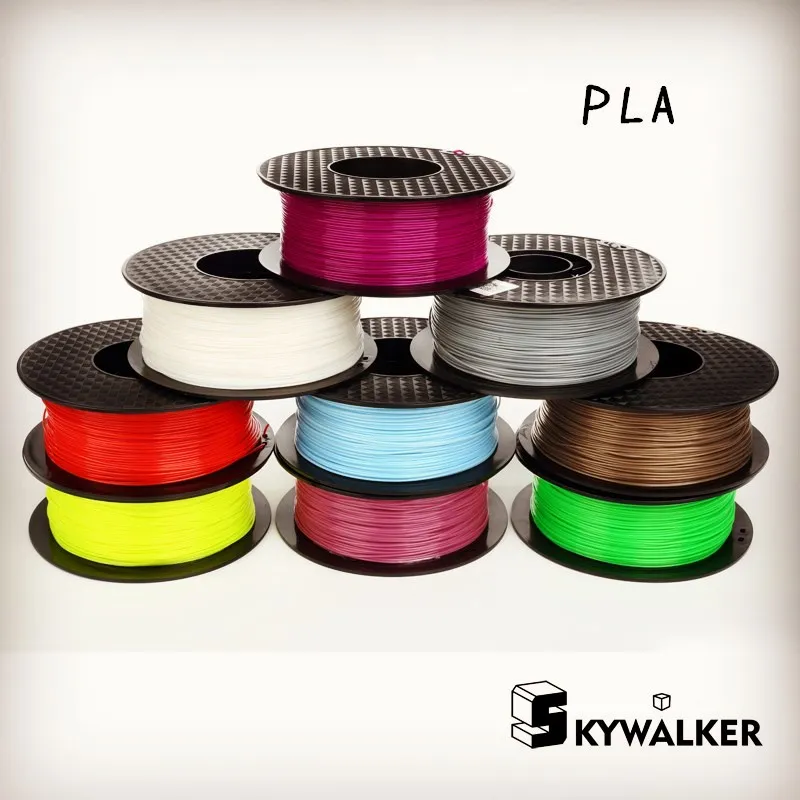 The main feature of PVA is its water solubility. 3D printers equipped with dual extruders have the ability to print models with PVA support structures. Upon completion of printing, the supports can be dissolved in water, leaving a finished model that does not require mechanical or chemical roughening. Similarly, PVA can be used to create water-soluble master patterns for molds and molds themselves.
The main feature of PVA is its water solubility. 3D printers equipped with dual extruders have the ability to print models with PVA support structures. Upon completion of printing, the supports can be dissolved in water, leaving a finished model that does not require mechanical or chemical roughening. Similarly, PVA can be used to create water-soluble master patterns for molds and molds themselves.
The mechanical properties of PVA are quite interesting. At low humidity, plastic has high tensile strength. With increasing humidity, strength decreases, but elasticity increases. The extrusion temperature is 160-175°C, which allows the use of PVA in printers designed for printing with ABS and PLA plastics.
Since the material easily absorbs moisture, it is recommended to store PVA plastic in dry packaging and, if necessary, dry before use. Drying can be done in a pottery kiln or an ordinary oven. As a rule, drying of standard coils takes 6-8 hours at a temperature of 60-80°C. Exceeding 220°C will cause the plastic to decompose, which should be taken into account when printing.
Exceeding 220°C will cause the plastic to decompose, which should be taken into account when printing.
Nylon
Nylon is attractive due to its high wear resistance and low coefficient of friction. Thus, nylon is often used to coat friction parts, which improves their performance and often allows them to function without lubrication. Following the widespread use of nylon in industry, additive manufacturing has also become interested in the material. Attempts to print with nylon have been made almost since the early days of FDM/FFF technology.
In reality, there are several types of nylon produced by different methods and with slightly different characteristics. The most famous is nylon-66, created by the American company DuPont in 1935. The second most popular option is nylon-6, developed by BASF to circumvent the DuPont patent. These two options are very similar. In terms of 3D printing, the main difference is the melting point: Nylon-6 melts at 220°C, while Nylon-66 melts at 265°C.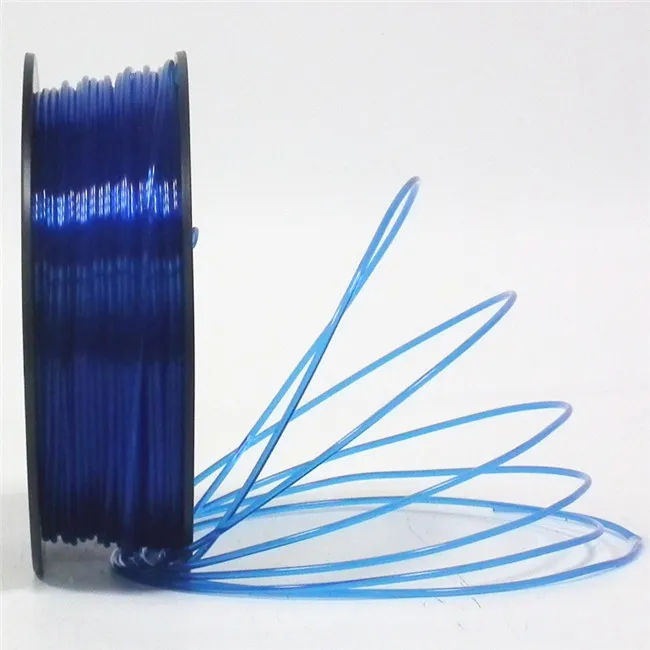
Many hobbyists prefer to use commercially available nylon threads such as trimmer wire. The diameter of such materials often corresponds to the diameter of standard FFF materials, which makes their use tempting. At the same time, these products are usually not pure nylon. In the case of trimmer rods, the material consists of nylon and fiberglass for an optimal combination of flexibility and rigidity.
Fiberglass has a high melting point and therefore printing with these materials is prone to high nozzle wear and plugging.
Recently there have been attempts to commercially develop nylon-based printing materials specifically for FDM/FFF applications, including Nylon-PA6 and Taulman 680. These grades are extrudable at 230-260°C.
Since nylon easily absorbs moisture, store consumables in vacuum packaging or at least in a container with water-absorbing materials. A sign of excessively damp media will be steam escaping from the nozzle during printing, which is not dangerous, but may degrade the quality of the model.
When printing with nylon, it is not recommended to use a polyimide desktop coating as the two materials fuse together. As a coating, you can use adhesive tape with wax impregnation (masking tape). The use of a heated bed will help reduce the possibility of deformation of the model, similar to printing with ABS plastic. Due to the low coefficient of friction of nylon, extruders with studded feeders should be used.
The nylon layers have excellent adhesion, minimizing the chance of delamination.
Nylon is difficult to bond, making it difficult to print large multi-piece models. Alternatively, fusion of parts is possible.
Because nylon can release toxic fumes when heated, we recommend that you print in a well-ventilated area or use an exhaust fan.
Polycarbonate (PC)
Polycarbonates are attractive due to their high strength and toughness, as well as resistance to high and low temperatures.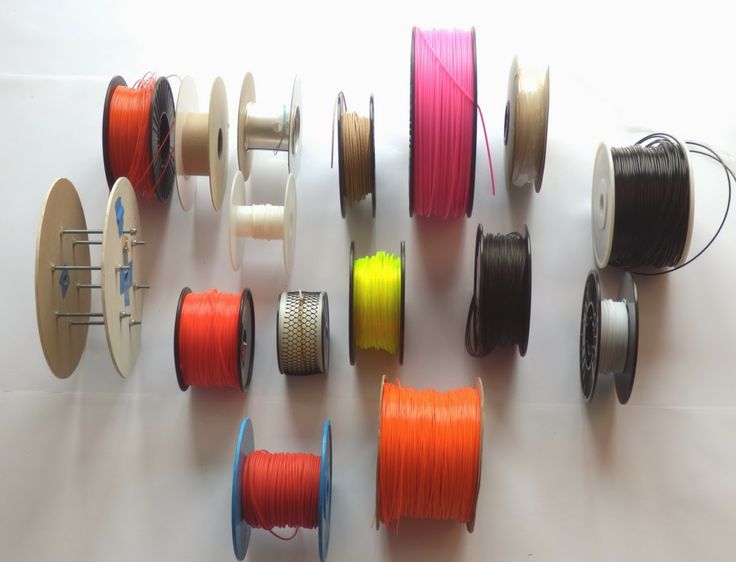
The potential health risk of printing is worth noting: the toxic and potentially carcinogenic compound bisphenol A is often used as a raw material. .
The extrusion temperature depends on the printing speed to avoid cracking, but the minimum temperature at 30mm/s can be considered as 265°C. When printing, the use of polyimide film is recommended for better adhesion to the desktop surface. The high susceptibility of polycarbonate to deformation requires the use of a heated platform and, if possible, a closed housing with heating of the working chamber.
Polycarbonate is highly hygroscopic (easily absorbs moisture), which requires storage in dry conditions to avoid the formation of bubbles in the applied layers. For extended printing in humid climates, even the print spool may need to be stored in a moisture-proof container.
High Density Polyethylene (HDPE)
Arguably the most common plastic in the world, polyethylene is relatively rare among 3D printed materials. The reason for this is the difficulty in layer-by-layer manufacturing of models.
The reason for this is the difficulty in layer-by-layer manufacturing of models.
Polyethylene melts easily (130-145°C) and hardens quickly (100-120°C), as a result of which the applied layers often do not have time to set. In addition, polyethylene is characterized by high shrinkage, which provokes the twisting of the first layers and the deformation of the models as a whole during uneven solidification. Printing with polyethylene requires the use of a heated platform and a working chamber with accurate temperature control to slow down the cooling of the applied layers. In addition, you will need to print at high speed.
Difficulties in use are more than offset by the cheapness and availability of this material. Recently, several devices have been developed for processing plastic waste from HDPE (bottles, food packaging, etc.) into standard filaments for printing on FDM/FFF printers. Examples are FilaBot and RecycleBot. Due to the simplicity of design, RecycleBot devices are often assembled by 3D craftsmen.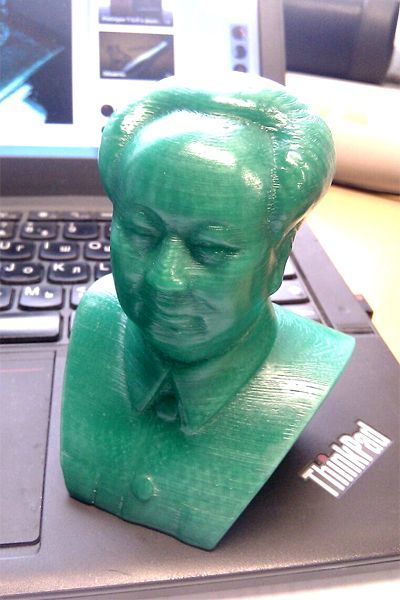
Melting polyethylene releases harmful vapors, so it is recommended to print in well-ventilated areas.
Polypropylene (PP, PP)
Polypropylene is a widely used plastic used in the manufacture of packaging materials, utensils, syringes, pipes, etc. The material has a low specific gravity, is non-toxic, has good chemical resistance, is resistant to moisture and wear, and cheap enough. Among the disadvantages of polypropylene, one can note the vulnerability to temperatures below -5 ° C and to direct sunlight.
The main difficulty in printing with polypropylene is the high shrinkage of the material during cooling - up to 2.4%. For comparison, the shrinkage of the popular but already problematic ABS plastic reaches 0.8%. Although polypropylene adheres well to cold surfaces, it is recommended to print on a heated platform to avoid deformation of models. The minimum recommended extrusion temperature is 220°C.
Polypropylene printing filaments are sold by Orbi-Tech, German RepRap, Qingdao TSD Plastic. Stratasys has developed a polypropylene simulant optimized for 3D printing called Endur.
Polycaprolactone (PCL)
Polycaprolactone (aka Hand Moldable Plastic, Mold-Your-Own Grips, InstaMorph, Shapelock, Friendly Plastic, Polymorph, Polymorphus, Ecoformax) - biodegradable polyester, characterized by an extremely low melting point of about 60 ° C . In practice, this property creates certain problems in 3D printing, since not all 3D printers can be configured to work at such low temperatures. Heating polycaprolactone to the usual extrusion temperatures (about 200°C) causes a loss of mechanical properties and may lead to breakage of the extruder.
Polycaprolactone is non-toxic, making it suitable for use in the medical industry, and biodegradable. When ingested, polycaprolactone breaks down, which makes printing with this material safe.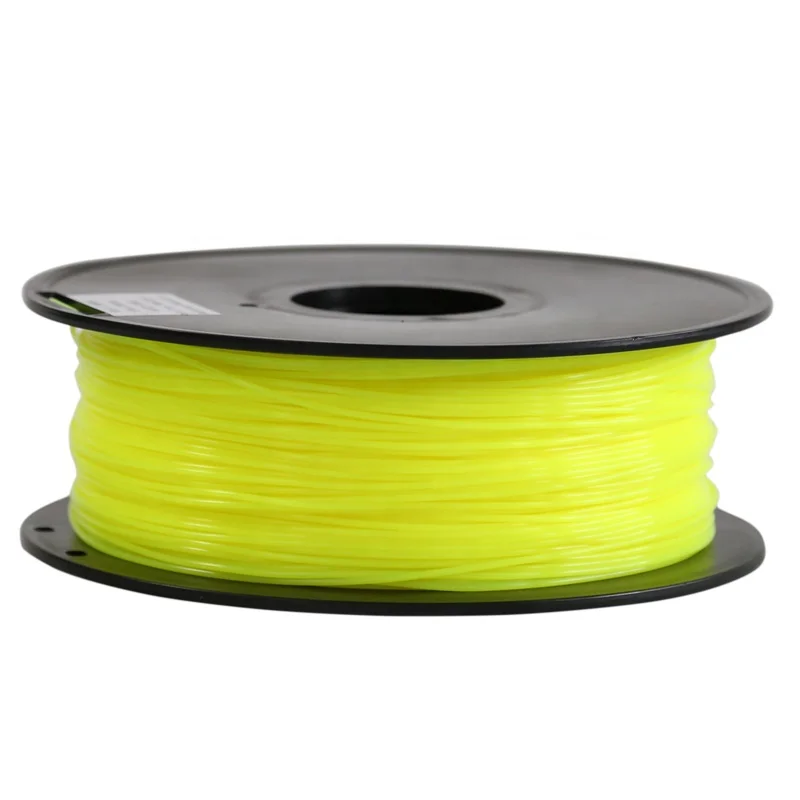 Due to the low melting point, there is no danger of burns when touching fresh models. The high plasticity of the material makes it possible to reuse.
Due to the low melting point, there is no danger of burns when touching fresh models. The high plasticity of the material makes it possible to reuse.
Polycaprolactone is of little use for creating functional mechanical models due to its viscosity (glass transition temperature is -60°C) and low heat resistance (melting point is 60°C). On the other hand, this material is perfect for the production of mock-ups and food containers.
The material sticks easily to the surface of even a cold working table and is easy to paint.
Polyphenylsulfone (PPSU)
Polyphenylsulfone is a high strength thermoplastic used extensively in the aviation industry. The material has excellent chemical and thermal stability and practically does not burn. Polyphenylsulfone is biologically inert, which makes it possible to use this material for the production of tableware and food containers. Operating temperature range is -50°С - 180°С.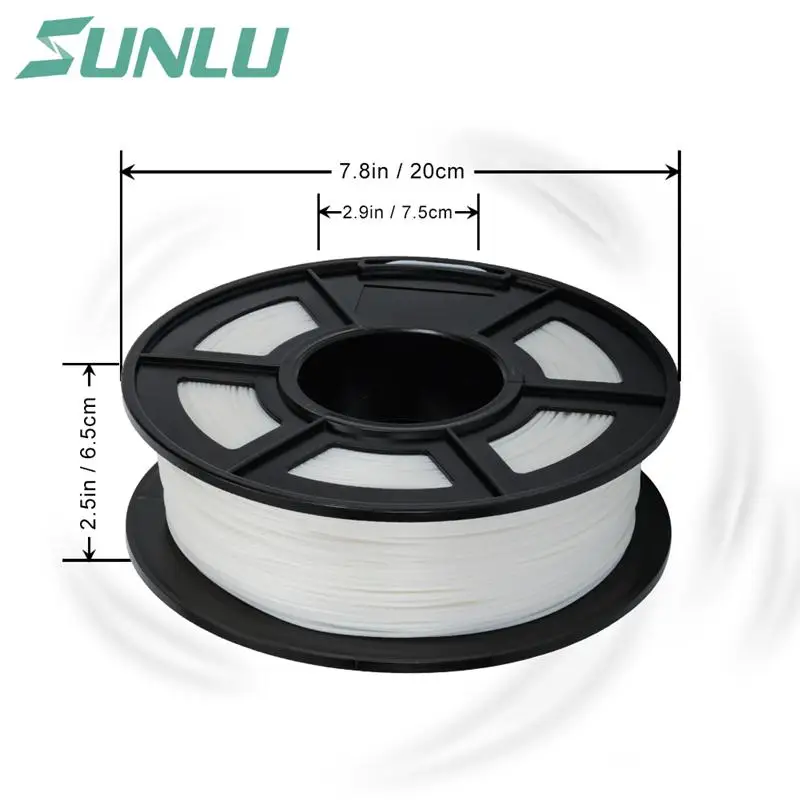 Plastic is resistant to solvents and fuels and lubricants.
Plastic is resistant to solvents and fuels and lubricants.
For all its merits, polyphenylsulfone is rarely used in 3D printing due to its high melting point, reaching 370°C. Such extrusion temperatures are beyond the power of most desktop printers, although printing is theoretically possible using ceramic nozzles. Currently, the only active user of the material is Stratasys, which offers industrial Fortus installations.
Polymethyl methacrylate (Acrylic, plexiglass, acrylic, PMMA)
Polymethyl methacrylate is a well-known organic glass. The material is durable, moisture resistant, environmentally friendly, easy to glue, plastic enough and resistant to direct sunlight.
Unfortunately, acrylic is not suitable for FDM/FFF printing for a number of reasons. Acrylic is poorly stored in the form of spools of thread, as constant mechanical stress leads to the gradual destruction of the material. To avoid bubbles, the print resolution must be high, with a precision almost impossible for home printers.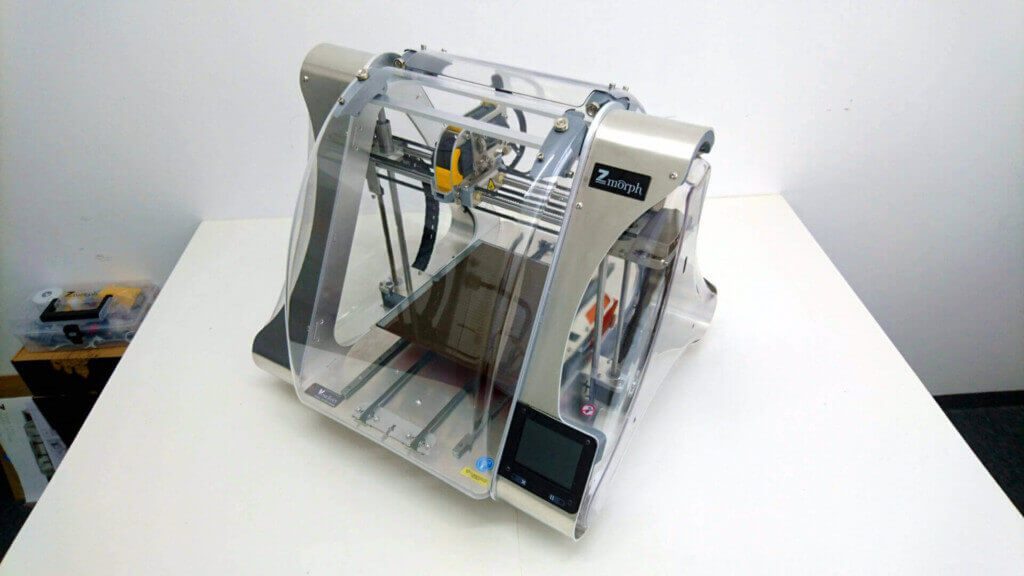 Acrylic's rapid curing requires strict environmental control of the working chamber and high print speeds. Again, the print speeds of FDM/FFF printers are inversely related to print resolution, which exacerbates the problem.
Acrylic's rapid curing requires strict environmental control of the working chamber and high print speeds. Again, the print speeds of FDM/FFF printers are inversely related to print resolution, which exacerbates the problem.
However, attempts are being made to print with acrylic, and some of them are producing relatively positive results. However, when creating sufficiently strong models, it is not yet possible to avoid the formation of bubbles and achieve the usual transparency of the material. At the moment, the best results with acrylic are shown by another printing technology - multi-jet modeling (MJM) from 3D Systems. In this case, a photopolymer version of acrylic is used. Stratasys has also made significant progress using its own photopolymer acrylic simulant VeroClear on Objet Eden printers. It is hoped that the high demand for acrylic will lead to the emergence of composite materials based on polymethyl methacrylate, designed specifically for FDM/FFF printing.
Polyethylene terephthalate (PET, PET)
Polyethylene terephthalate - this complex name hides a material used for the production of plastic bottles and other food and medical containers.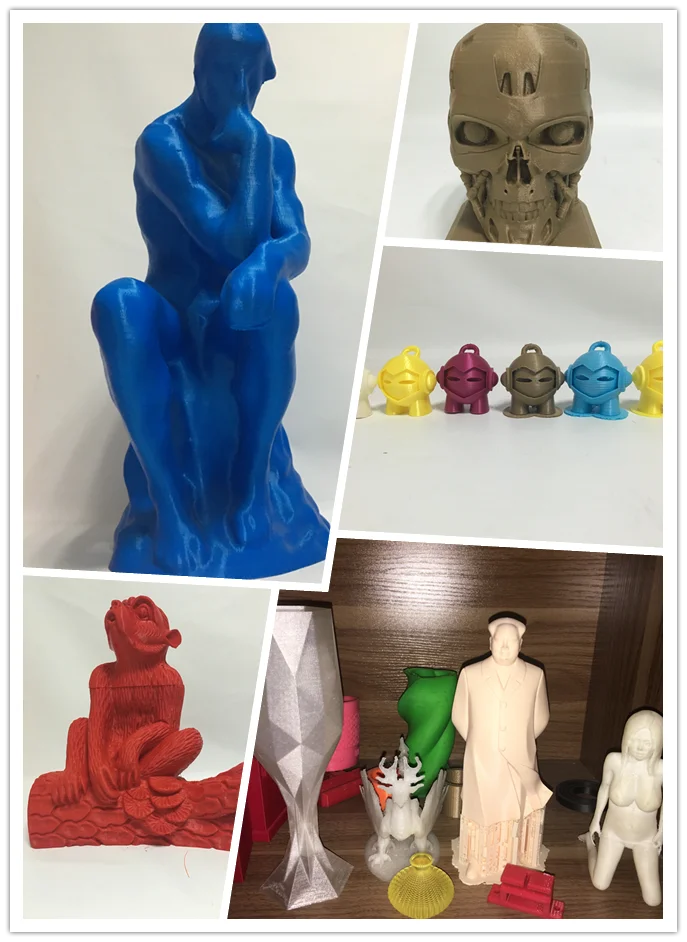
The material has a high chemical resistance to acids, alkalis and organic solvents. The physical properties of PET are also impressive with high wear resistance and tolerance to a wide temperature range from -40°C to 75°C. Among other things, the material is easily machined.
Printing with PET is somewhat problematic due to the relatively high melting point of up to 260°C and significant cooling shrinkage of up to 2%. Using PET as a consumable requires approximately the same conditions as printing with ABS.
Achieving transparency of models requires rapid cooling to pass the glass transition threshold of 70°C - 80°C.
The material has become the focus of interest for 3D craftsmen using used containers as raw materials for the home production of 3D printing consumables. Recycling devices such as FilaBot or RecycleBot are used to make threads.
High impact polystyrene (HIPS)
High impact polystyrene is widely used in industry for the production of various household products, building materials, disposable tableware, toys, medical instruments, etc.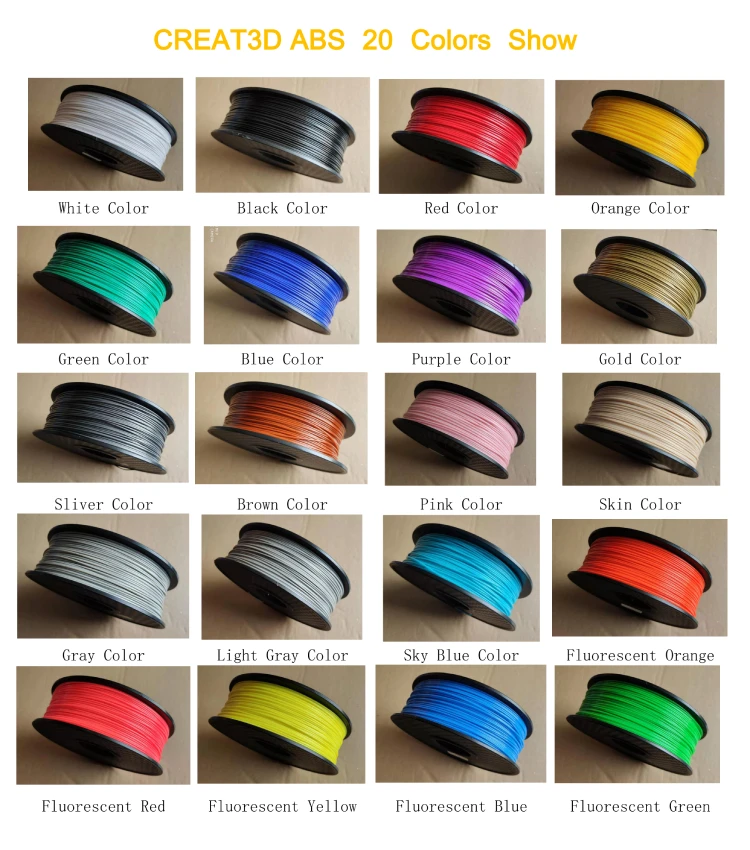
When 3D printed, polystyrene exhibits physical properties very similar to the popular ABS plastic, making it an increasingly popular material among 3D crafters. The most attractive feature of polystyrene is the difference from ABS in terms of chemical properties: polystyrene is quite easily amenable to the organic solvent Limonen. Since Limonene has no effect on ABS plastic, it is possible to use polystyrene as a material for building soluble support structures, which is extremely useful when building complex, interlaced models with internal supports. Compared to the convenient, water-soluble polyvinyl alcohol (PVA) plastic, polystyrene compares favorably with relatively low cost and resistance to humid climates that make PVA difficult to work with.
It's worth bearing in mind that some ABS manufacturers mix slightly cheaper polystyrene into their consumables. Accordingly, models made from such materials can be dissolved in Limonene along with supporting structures.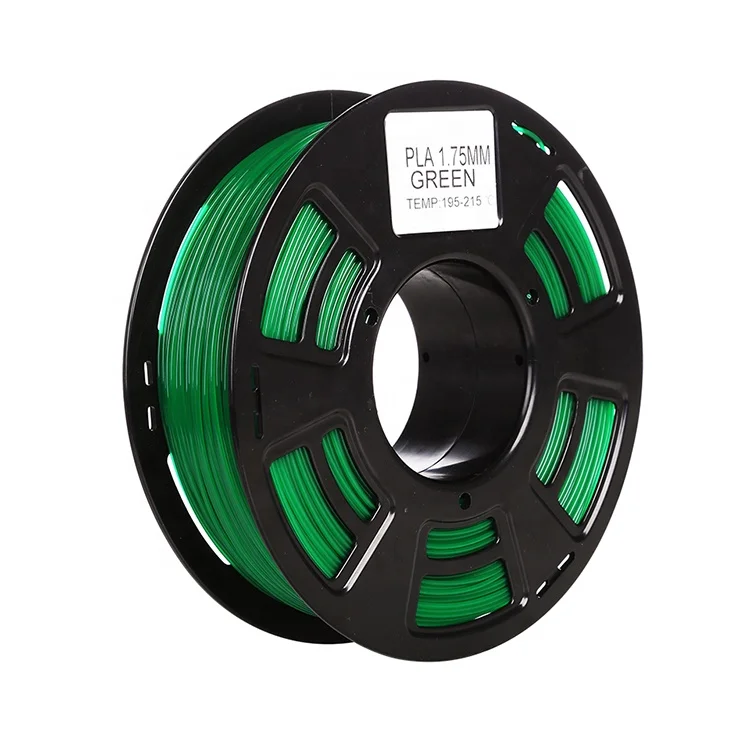
When polystyrene is heated to extrusion temperature, toxic fumes can be released, so printing in a well-ventilated area is recommended.
Wood simulants (LAYWOO-D3, BambooFill)
LAYWOO-D3 is a recent development for printing wood-like models. The material consists of 40% natural wood chips of microscopic size and 60% binder polymer. The LAYWOO-D3 is very easy to handle, being virtually warp-free and does not require the use of a heated platform. According to the manufacturers, the polymer is non-toxic and completely safe.
The unique material properties allow for different visual results when printing with different nozzle temperatures. The operating temperature range is 180°C-250°C. As the extrusion temperature increases, the shade of the material becomes progressively darker, allowing it to simulate different types of wood or annual rings.
Finished models are excellent for mechanical processing - grinding, drilling, etc.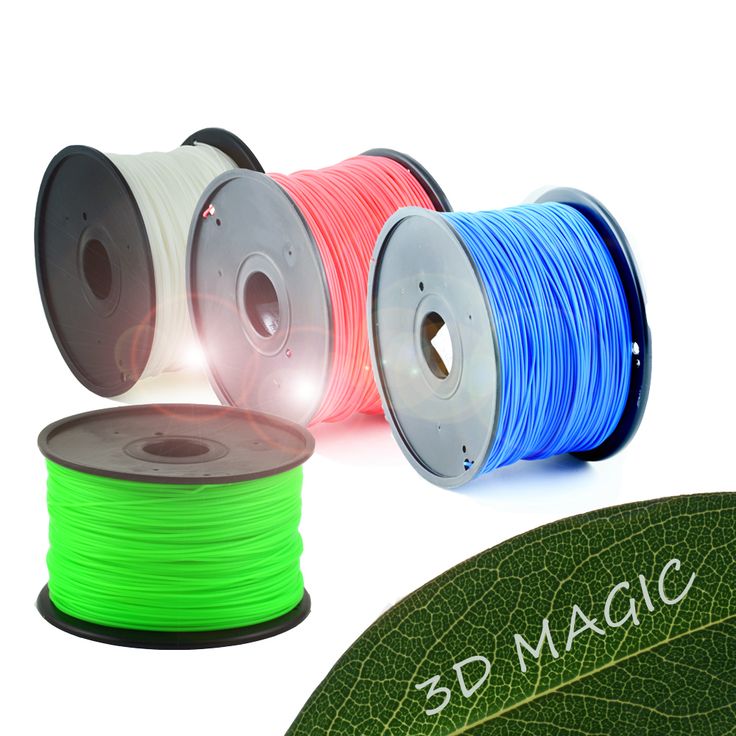 In addition, the products are easily painted, and unpainted models even have a characteristic woody smell.
In addition, the products are easily painted, and unpainted models even have a characteristic woody smell.
Unfortunately, the cost of the material is almost four times higher than the price of popular materials such as PLA and ABS plastics. As popularity is projected to grow, the material should become more accessible.
Alternative materials are currently being developed and tested, such as BambooFill from the Dutch company ColorFabb.
Sandstone simulants (Laybrick)
Composite material from the inventor Kai Parti, responsible for the revolutionary wood simulant LAYWOO-D3. This time, Kai set his sights on sandstone imitation, using a tried and tested method of mixing a binder with a filler, in this case mineral.
Laybrick allows you to produce objects with different surface textures. At low extrusion temperatures of the order of 165°C-190°C, the finished products have a smooth surface. Increasing the printing temperature makes the material rougher, up to a high degree of resemblance to natural sandstone at extrusion temperatures above 210°C.
The material is easy to work with no need to heat the work platform, does not show significant deformation when shrinking and does not produce toxic fumes when heated. The only drawback can be considered a rather high cost of the material, which is largely due to limited production.
Metal Simulators (BronzeFill)
Metals have attracted additive manufacturing enthusiasts since the early days of 3D printing technology. Unfortunately, printing with pure metals and alloys causes a lot of difficulties that are insurmountable for most 3D printing methods. Fully functional metal products can only be produced using technologies such as SLS, DLMS or EBM, which require the use of industrial plants that cost hundreds of thousands of dollars. At the same time, metal imitators are successfully used in 3D inkjet printing (3DP), where products are formed from metal powders, the particles of which are held together by an applied binder material. In FDM/FFF printing, metal simulants are just emerging.
In FDM/FFF printing, metal simulants are just emerging.
An interesting example is BronzeFill, which is actually a transparent PLA plastic filled with bronze microparticles. The material, currently in beta testing, must prove suitability for use in any printer designed to work with polylactide.
Finished products are easy to polish, achieving a high external resemblance to all-metal products. At the same time, it should be taken into account that the binding element of the material is thermoplastic, with appropriate mechanical and temperature limitations.
Go to the main page of the 3D Printing Encyclopedia
Consumables for FDM printing Plastic filaments
No matter how high-tech 3D printing is, 3D modeling is impossible without such an inexpensive component as consumables. Each 3D prototyping technology has its own pool of consumables - they are developed taking into account compatibility with printers, cost efficiency and quality of output 3D objects.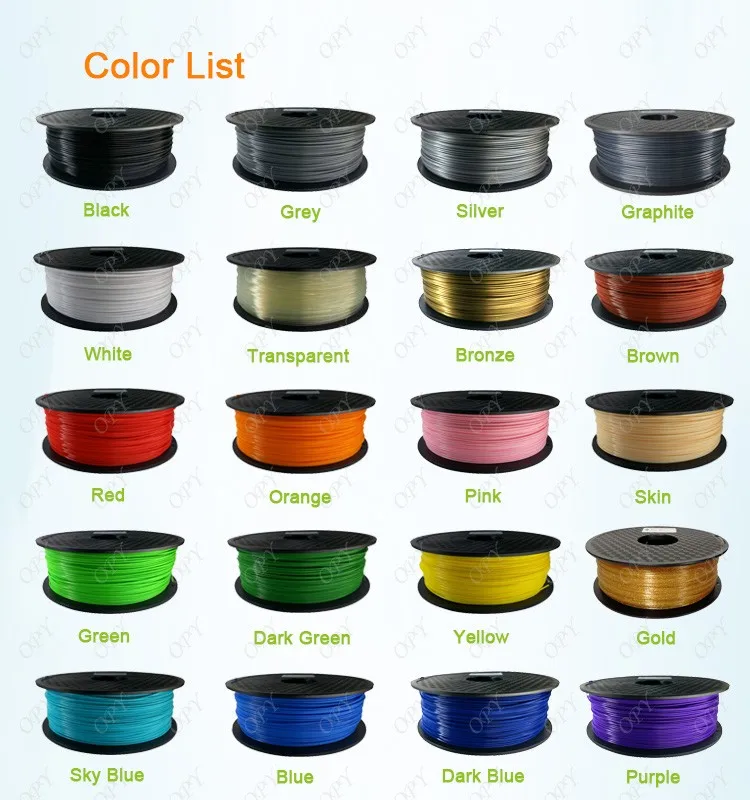 Thus, industrial installations use powder materials, medical 3D printers are biocompatible and neutral, culinary ones work with a wide range of paste-like and viscous food compositions, and the most common in the segment of personal and semi-professional 3D equipment - with plastic thread and photopolymer resins. And since this segment is the most massive, it is on it that we will focus in the first place.
Thus, industrial installations use powder materials, medical 3D printers are biocompatible and neutral, culinary ones work with a wide range of paste-like and viscous food compositions, and the most common in the segment of personal and semi-professional 3D equipment - with plastic thread and photopolymer resins. And since this segment is the most massive, it is on it that we will focus in the first place.
Of course, you have already studied our range of consumables - in the 3DMall online store it is rightfully considered one of the most worthy and affordable in the whole country. Here you can buy consumables for FDM and other types of printers inexpensively with delivery in Moscow and Russia, including the possibility of picking up at one of the many points of issue. And our Knowledge Base and prompt free consultations with our experts on all issues related to 3D printing will help you make the right choice.
FDM consumables
Most modern personal printers are FDM units, which, like their consumables, are more than affordable. Today, such printers are available not only in offices, design and engineering offices, but also in the homes of many fans of maker and 3D technologies.
Today, such printers are available not only in offices, design and engineering offices, but also in the homes of many fans of maker and 3D technologies.
There are many varieties of plastics for 3D printing - a far from exhaustive list of materials includes PLA, ABS, PVA, Nylon, PC, HDPE, PP, PCL, PPSU, Acrylic, PET, HIPS, imitation wood, sandstone or metals, the characteristics of which we consider in more detail.
PLA - polyactide
The undisputed leader of the modern market of consumables for FDM printers - an environmentally friendly, biocompatible, thermoplastic compound. Its production is based on corn and sugar cane, thanks to which products from this type of plastic are successfully used in everyday life. It is used for the manufacture of toys, dishes, souvenirs, housing elements for household appliances, designer models, food packaging, medicines, surgical thread, and due to its affordability, it is also used for education and hobbies.
Despite the high surface quality of PLA products, it is a stretch to call them practical - the material is quite soft and short-lived. The melting temperature is 170-180 o C, the glass transition process begins when cooled to 50 o C.
The melting temperature is 170-180 o C, the glass transition process begins when cooled to 50 o C.
PLA has proven to be the best type of material for 3D printers with an open build chamber and a heated worktable.
Benefits include low shrinkage so finished objects don't warp during curing, ease of handling and versatility.
ABS
ABS, or acrylonitrile butadiene styrene, is the most popular heat-resistant plastic in the field of 3D prototyping, which, however, cannot be considered one of the most popular due to the fact that printing with its use is quite problematic.
Advantages - durability, mechanical strength, resistance to moisture, oils, a wide range of acids and elevated temperatures (it withstands heat up to 100-110 about C, it responds well to staining). At the same time, some varieties are destroyed by prolonged contact with direct sunlight, and the melting point is about 180 about C - considered low for industrial use.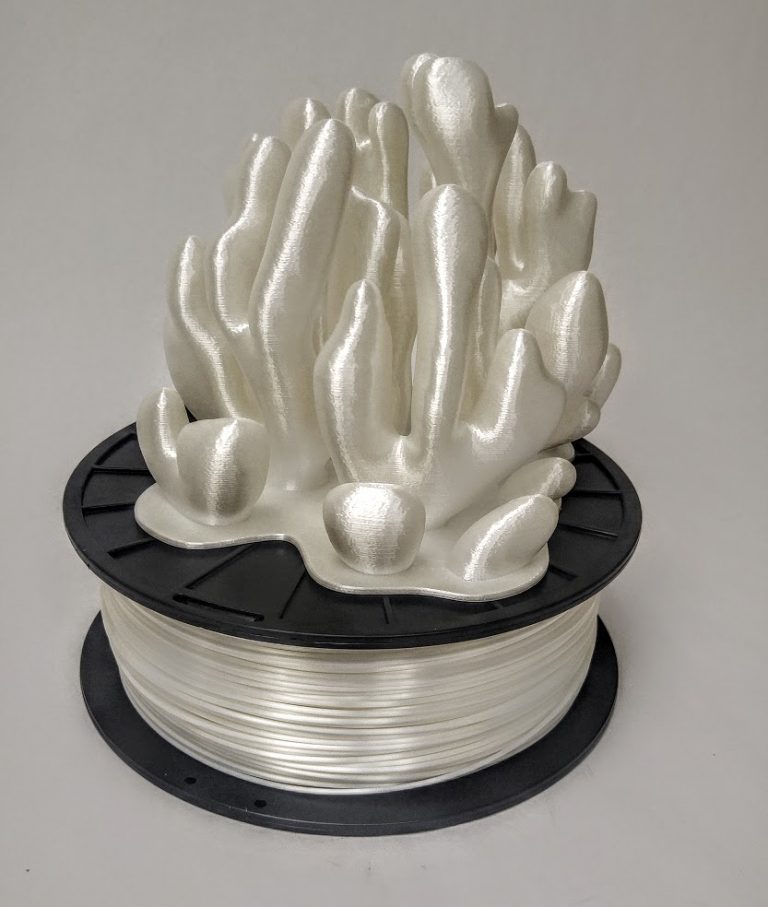 When cooling, the object is subject to significant shrinkage - the first layers can twist, deform and crack. To avoid such problems, the use of ABS is recommended for printing on 3D printers with a heated desktop and a closed body. For a more reliable grip on the work surface, you should also use adhesive tape.
When cooling, the object is subject to significant shrinkage - the first layers can twist, deform and crack. To avoid such problems, the use of ABS is recommended for printing on 3D printers with a heated desktop and a closed body. For a more reliable grip on the work surface, you should also use adhesive tape.
ABS products are absolutely safe at normal air temperatures, however, heating releases poisonous acrylonitrile fumes, so it should not be used for printing toys, household items, dishes and food storage containers.
PVA - polyvinyl alcohol
A truly unique material for special applications. Its main feature is the ability to dissolve in water, which allows it to be used to build support structures (support for particularly filigree elements of the main object) when printing on printers with 2 extruders. The finished model after separation of the support does not require mechanical post-processing - its surface is smooth and of high quality.
The mechanical properties of this type of plastic are also interesting - in conditions of low humidity it has amazing strength, and with increasing humidity it becomes elastic, however, with a loss of strength. The melting temperature is 165-175 about C, which allows it to be used in combination with PLA and ABS plastics.
The melting temperature is 165-175 about C, which allows it to be used in combination with PLA and ABS plastics.
Before using PVA, it is recommended to dry it additionally (for example, in an oven) at a temperature not exceeding 80 C for 6-8 hours, even if it was stored in an absolutely sealed dry container.
Nylon
The main advantage of this material is its resistance to wear due to friction, which makes it very popular in various industries, in particular for coating parts as an alternative to lubrication.
Nylon thread is represented by a fairly large assortment, each variety has its own advantages and disadvantages. The most popular and practical are traditionally considered the nylon-66 created by DuPont in 1935 and its later analogue produced by BASF nylon-6. Their melting points are respectively 265 and 220 about C, which determines the features of their application.
Key features - easily absorbs moisture, fuses with polyimide, which requires special care when choosing a printer, for a more secure fixation to the desktop, use wax-impregnated adhesive tape.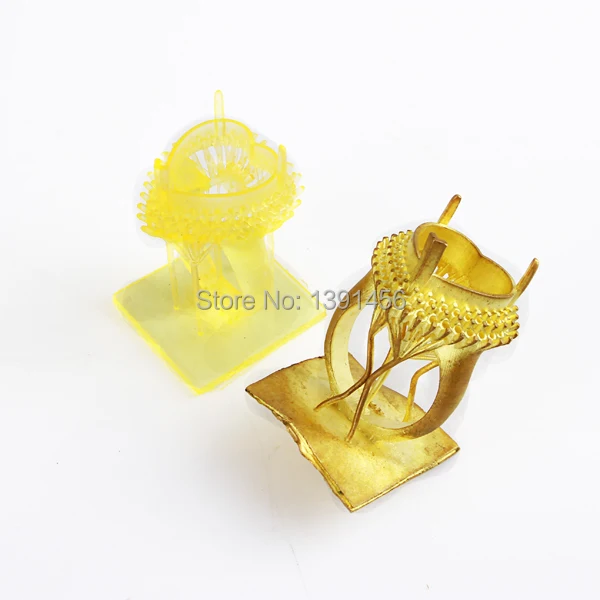 Recommended for refilling printers with studded traction mechanisms as part of extruders, as well as for printing solid models, since nylon parts stick together very poorly.
Recommended for refilling printers with studded traction mechanisms as part of extruders, as well as for printing solid models, since nylon parts stick together very poorly.
PC - polycarbonate
The main advantages of polycarbonate plastic filament are its high strength and temperature resistance, it can be cooled and heated without the risk of deformation of the finished object, which cannot be said about the printing process itself. The melting temperature of the material is 265 about C, safety requirements and risks of deformation during model building will help to optimize equipment with a closed print chamber and a heated platform. You should immediately pay attention to the risks - printing these materials is harmful to health, since bisphenol A, a potentially carcinogenic and toxic substance, is used in the process of its production.
Due to its high hygroscopicity, RS should be stored in dry and fully sealed containers.
HDPE - High Density Polyethylene
This is one of the world's most sought after plastics for 3D printing.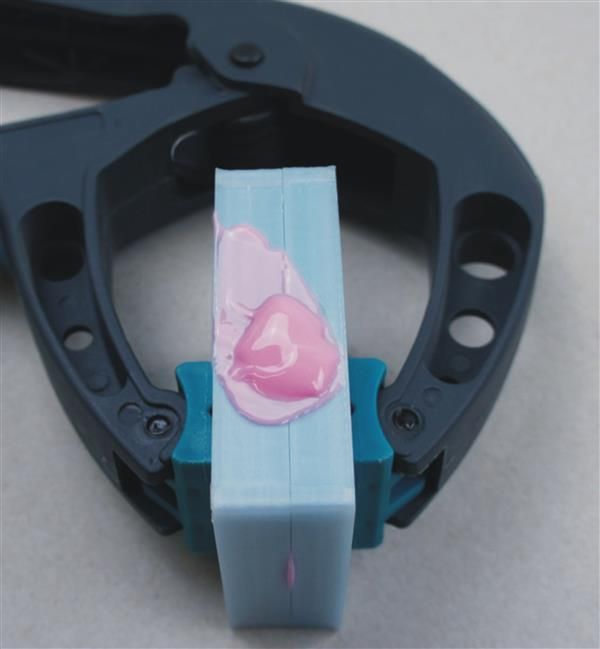 The material melts very easily and hardens in record time - the temperature difference between these processes is only 20-25 degrees, the average melting point is 130-145 about C. (hardening too fast), high shrinkage and deformation activity. The optimal solution for high quality HDPE printing results is high speed prototyping and careful temperature control of the build chamber and work platform to slow down the process of layer curing. However, HDPE is in the category of the cheapest consumables. It is used for the production of plastic bottles and containers, disposable tableware.
The material melts very easily and hardens in record time - the temperature difference between these processes is only 20-25 degrees, the average melting point is 130-145 about C. (hardening too fast), high shrinkage and deformation activity. The optimal solution for high quality HDPE printing results is high speed prototyping and careful temperature control of the build chamber and work platform to slow down the process of layer curing. However, HDPE is in the category of the cheapest consumables. It is used for the production of plastic bottles and containers, disposable tableware.
An interesting fact is that this type of plastic thread can also be made from plastic waste, there are even 2 professional installations that can cope with this task (universal processing machines FilaBot and RecycleBot.
PP - polypropylene
A versatile and inexpensive material used for the production a wide range of plastic products - from dishes and packaging to pipes and fittings.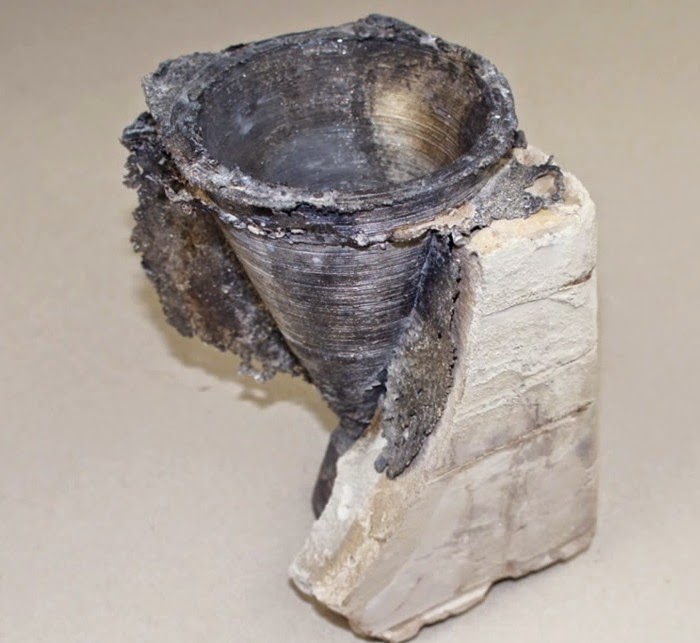 The advantages of PP include low specific gravity, chemical resistance, non-toxicity, moisture resistance, wear resistance and low cost.Unstable with constant contact with direct sunlight and temperatures below -5 o C.
The advantages of PP include low specific gravity, chemical resistance, non-toxicity, moisture resistance, wear resistance and low cost.Unstable with constant contact with direct sunlight and temperatures below -5 o C.
Print shrinkage is up to 2.4%, 3 times greater than with ABS. Molten material adheres well even to a cold surface, but for high quality printing it is recommended to use equipment with a heated bed.
More popular than the original polypropylene is its imitation, developed by the world famous company Stratasys - Endur.
PCL - polyaprolactone
This is a low temperature biodegradable polyester that already melts at 60 o C, which requires a careful approach when choosing equipment for PLC printing - not all 3D printer models support this mode. Non-toxic - used in the field of medicine, has excellent plasticity, so it can be used an unlimited number of times.
High viscosity and low temperature resistance make this material unsuitable for functional prototypes and objects, but it is ideal for printing food containers and various layouts.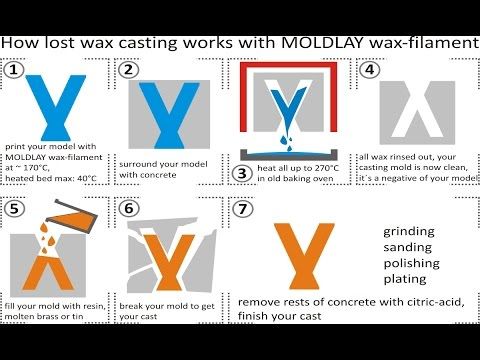
PPSU - polyphenylsulfone
Thermoplastic material with outstanding strength characteristics, in demand in the aviation industry. It is chemically and thermally resistant, does not burn, does not deform in a wide temperature range (-50 o C ... +180 o C). It is used in the production of food containers, dishes, household items. Resistant to corrosion from solvents and household chemicals.
With all the advantages, it is used infrequently, since the melting point is 370 o C.
Acrylic - plexiglass
Durable, environmentally friendly, moisture resistant material, characterized by excellent bonding quality of layers in the prototyping process. The objects have a homogeneous flat surface and excellent performance properties. It is rarely used for FDM printing, as it is difficult to store and requires the highest construction accuracy, which is very, very difficult to achieve on a classic personal printer.
Stratasys' VeroClear imitator, which is printed on Objet Eden printers, is in much greater demand.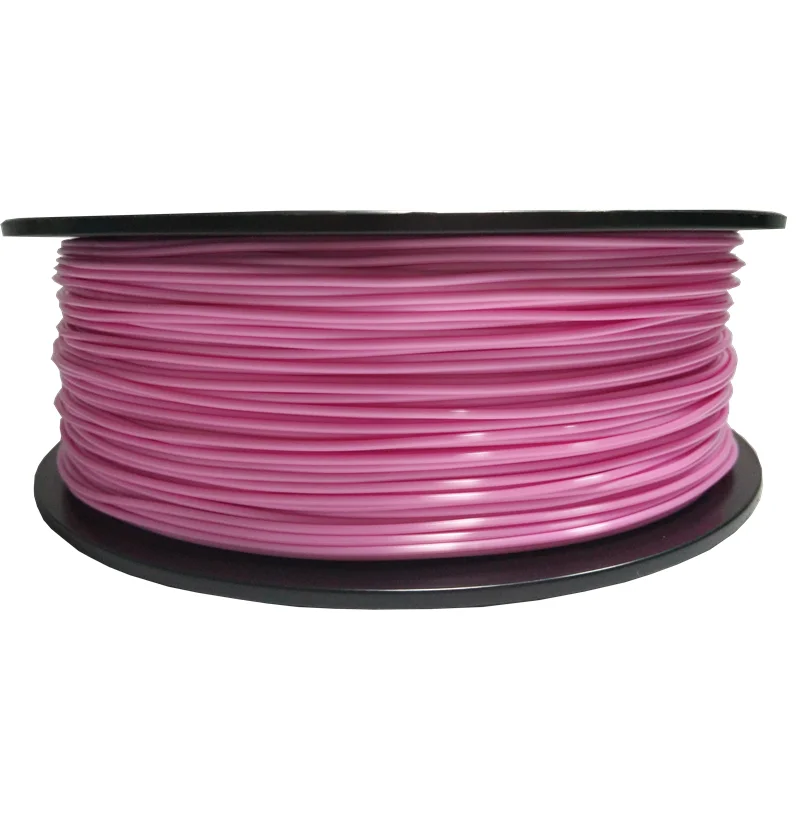
PET - polyethylene terephthalate
Food and medical containers are made mainly from this material with a very complicated name. Its main advantage is high chemical resistance, it is not subject to the damaging effects of a wide range of acids and alkalis, it is resistant to wear and a wide temperature range (-40 about C ... +75 about C). Shrinkage on cooling is about 2%, which, combined with a high melting point, reaching 260 about C, makes the printing process somewhat problematic. The transparency of the product is achieved by rapid cooling of the model to the glass transition threshold (+70-80 about C). In general, to obtain a consistently high-quality result, it is enough to create the same conditions as when printing ABS.
HIPS Soluble Support Material
This is a polystyrene material with an amazing toughness that is used to make real parts and components used in various industries in real use.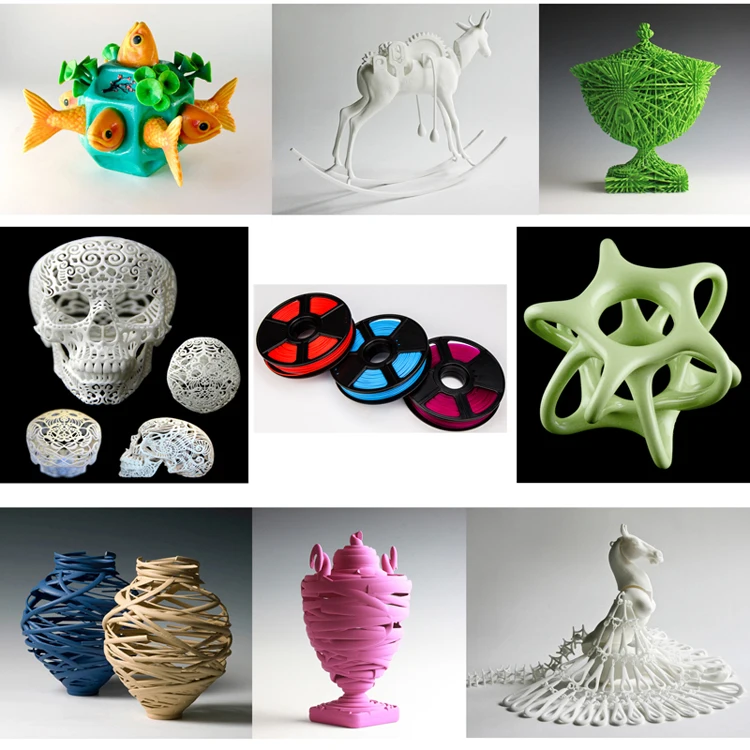 It is also used for the manufacture of toys, disposable tableware, a number of building materials. In terms of physical properties (strength and durability), it is similar to ABS plastic, but it dissolves easily in limonene. This feature allows it to be used as a support material for printing ABS plastic products, in comparison with PVA it has a much lower cost and absolute insensitivity to water.
It is also used for the manufacture of toys, disposable tableware, a number of building materials. In terms of physical properties (strength and durability), it is similar to ABS plastic, but it dissolves easily in limonene. This feature allows it to be used as a support material for printing ABS plastic products, in comparison with PVA it has a much lower cost and absolute insensitivity to water.
We recommend printing in well-ventilated rooms, as toxic volatile substances may be released during melting.
Wood imitators
This category of consumables includes LAYWOO-D3 and BambooFill, products from which both visually and functionally are in no way inferior to analogues made of natural wood - the products even have a characteristic woody aroma. They do not deform and do not require the use of a heated platform. LAYWOO-D3, for example, is made from dusted sawdust and a non-toxic binder polymer, making it safe and highly post-processable.
An interesting detail is that the use of nozzles with different heating parameters can achieve different decorative effects. For example, as the extrusion temperature increases, this type of material acquires a richer, darker hue.
For example, as the extrusion temperature increases, this type of material acquires a richer, darker hue.
The only negative is the high cost, which is almost 4 times higher than the price of PLA or ABS.
Laybrick - sandstone simulant
We owe this composite material with high aesthetic and performance characteristics to the inventor Kai Parti. By the way, LAYWOO-D3 is also his creation. The binder used as the basis for creating this type of material is mixed with a mineral filler - this explains the original texture of the resulting products.
Depending on the selected melting temperature, the surface of the products can be smoother or rougher (the higher it is, the greater the roughness).
One of the easiest materials to work with - it does not need a heated platform, it practically does not shrink or deform. The only drawback is the high cost compared to other filaments.
BronzeFill - metal simulant
Metal is the foundation of additive manufacturing, its use in 3D printing opens up almost unlimited possibilities for humanity.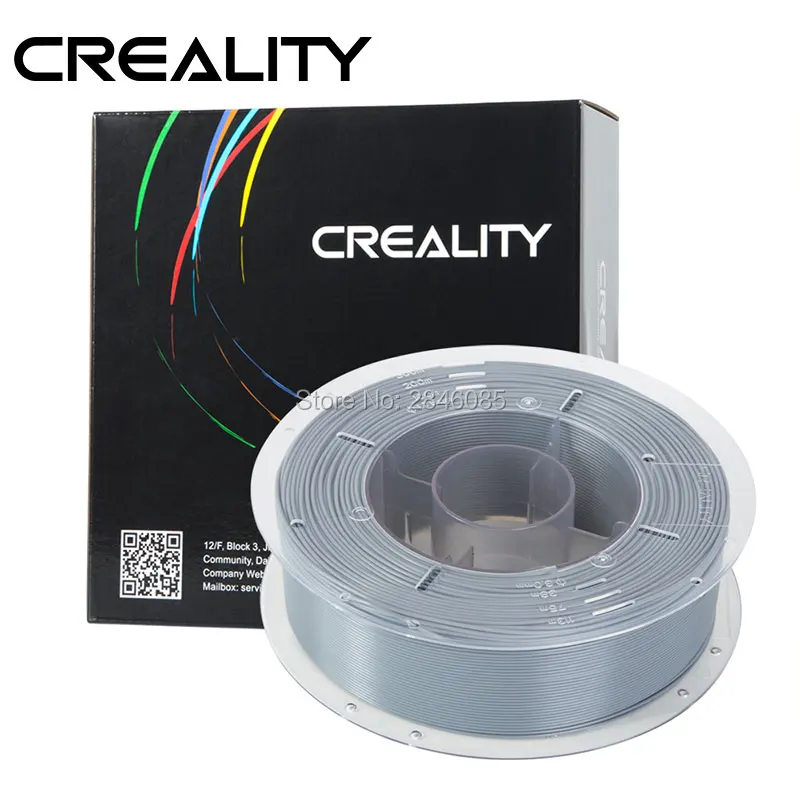 If not for the high cost, of course. Therefore, it is not surprising that a high-quality imitator, BronzeFill, has also been created for the followers of FDM printing. Products printed from it are not inferior to metal ones either visually or operationally.
If not for the high cost, of course. Therefore, it is not surprising that a high-quality imitator, BronzeFill, has also been created for the followers of FDM printing. Products printed from it are not inferior to metal ones either visually or operationally.
This is a virtually transparent PLA-based plastic that also contains a bronze filler. Finished 3D objects respond well to post-processing - grinding, polishing - and visually look like all-metal, but you should not forget that thermoplastic is based on it.
How to choose printing plastic?
The choice of printing media should be determined by the following several parameters:
- the capabilities of the 3D printer you have at your disposal;
- requirements for surface quality, detailing accuracy and performance of finished products;
- color;
- scope.
We offer you a small comparison table on the key characteristics of the most popular types of plastic in personal 3D printing, which will help you choose the best option.